CANADA
Tear Gas Launcher Deployed as Coronavirus Tensions Spiral in Canadian Prisons
Inmates and advocates worry that Correctional Services Canada’s bungled response to the COVID-19 pandemic will lead to violence.
By Justin Ling Apr 24 2020
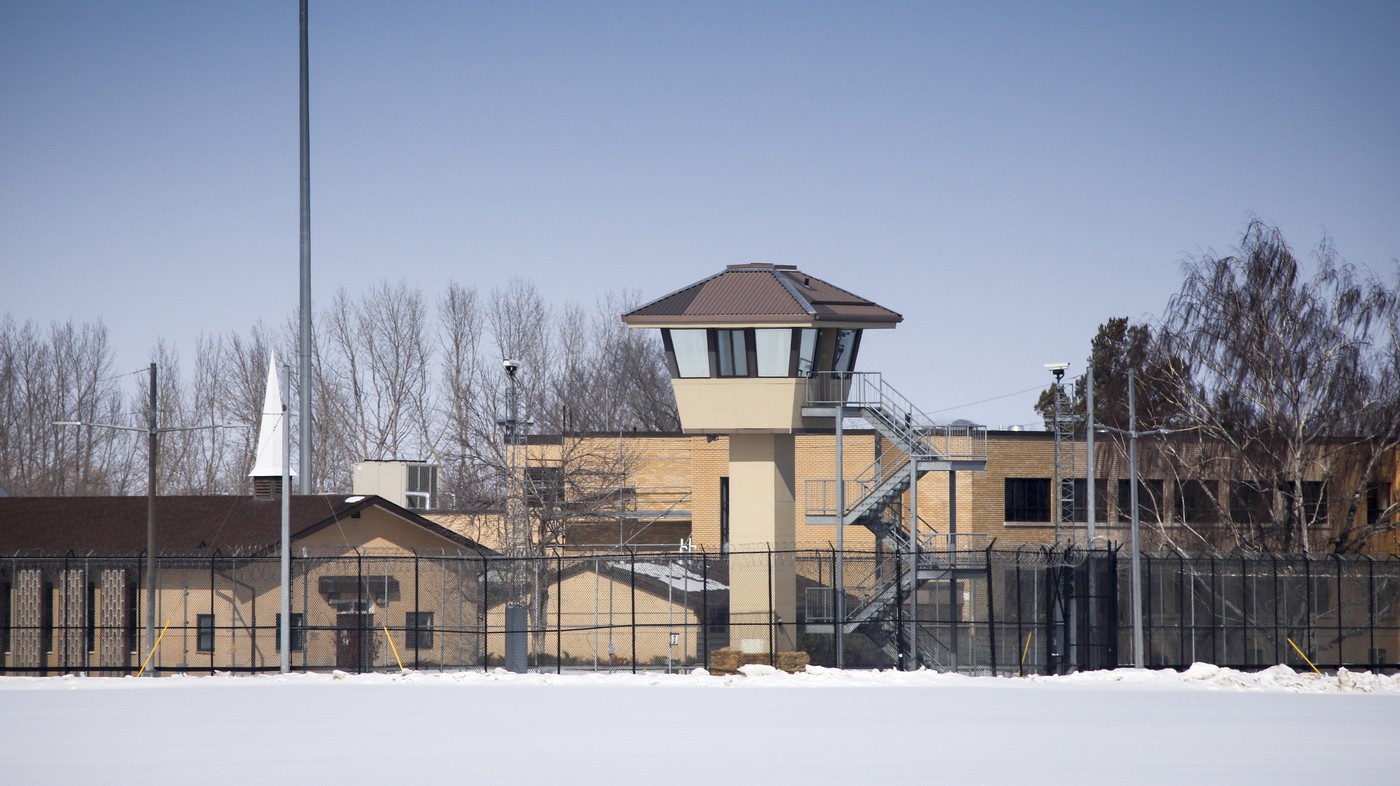
![]()
THE BOWDEN INSTITUTION MEDIUM SECURITY FACILITY NEAR BOWDEN, ALTA., THURSDAY, MARCH 19, 2020. THE CANADIAN PRESS/JEFF MCINTOSH
As tensions mount inside Canada’s prisons due to COVID-19, corrections officers have begun deploying pepper spray and rubber bullets against inmates. Fears are mounting that things could spiral out of control quickly.
Prison advocates and watchdogs say corrections officers have deployed tear gas and rubber bullets in prisons in Saskatchewan and Quebec.
As of Friday morning, Correctional Services Canada (CSC) has not responded to multiple requests for statistics on use of force inside its prisons in recent weeks.
At the Saskatchewan Penitentiary, no cases of the virus have been found yet, but there is emerging frustration on both sides. Earlier this week, inmate Bronson Gordon told CBC that guards at the maximum security wing of the prison were still refusing to wear masks and gloves.
In a recording from Wednesday evening, provided to VICE, Gordon said the interview had caused friction inside the prison. “They’re offended because of the thing that came on the news,” Gordon said, referring to the CBC story. Gordon said guards have called him and other inmates “snitches.”
That evening, as inmates went outside to snap some pictures—with visits cancelled, many inmates have taken to mailing disposable cameras to their loved ones—the corrections officers closed the door behind them, the inmates said. “They locked us outside,” Gordon said on the call, a recording of which was provided to VICE by prison advocate Sherri Maier.
The inmates were stuck outside for about a half hour in shorts and tank tops, according to Gordon and another inmate. Temperatures that evening were above freezing, but Gordon said it was still April in Saskatchewan—“cold.”
After being let back inside the prison, the recording picks up the sounds of frustrations mounting. “None of them are wearing masks right now,” Gordon said. “We’ve got one officer wearing a mask.”
Loud arguments can be heard in the background. At one point, two inmates confirmed, a corrections officer fetched a tear gas launcher.
In the background, inmates can be heard taunting the officers. Bronson said the inmate population is not looking to riot. “We’re pretty fucking close, though,” he said. “It’s not going to end good.”
Similar warnings have come from inside prisons across the country in recent weeks.
The call cuts out as inmates return to their cells. Maier, who spoke with Gordon the following day, said they averted physical conflict that night, but the prison has since tightened the prison lockdown even further. With no gym, no visits, and conflict over the corrections officers not wearing masks, things are coming to a head, unless something improves. Correctional Services has not responded to enquiries about the Saskatchewan Penitentiary.
At the Donnacona Penitentiary in Quebec, a maximum security institution, an inmate told the John Howard Society that inmates had been blocking their windows to protest conditions—inside many institutions, the only vantage point into a cell is the small window in the door. Blocking it with a pillow or clothing means guards cannot do their rounds, and has served as a form of peaceful protests for many inmates.
Rather than de-escalate the situation, the inmate said, the corrections officers fired teargas and “followed it with firearms using rubber bullets, which injured several prisoners—one had to be taken to an outside hospital for treatment.”
One inmate, they said, “came forward with his hands in the air saying ‘don’t shoot,’ to remove the barrier [in the window.] He was then shot in the leg.”
Correctional Services has not responded to a request for comment on the situation at Donnacona.
Many inmates report that corrections officers are not following protocols.
An April 8 directive from Correctional Services reads : "All asymptomatic staff/contractors who are unable to physically distance themselves (ie: be 2 meters apart) must wear a mask while in the workplace/institution.” A copy of that directive was leaked to VICE after Correctional Services refused to provide it.
More recently, Public Safety Minister Bill Blair has said that “every single corrections service worker and inmate in those institutions is being issued with personal protective equipment to help them be safe.” He made those comments on a Facebook townhall with a Liberal MP. The minister’s office has consistently refused interview requests.
Every inmate, and one healthcare worker, has confirmed that the usage of masks is inconsistent. VICE has been told of only one institution where inmates have been given masks—and have been required to wear them, under threat of disciplinary charge—in contrast to the minister’s categorical statement.
“One of the inmate cleaners requested the use of a mask while he was cleaning and was flatly refused,” says the partner of one inmate incarcerated at Dorchester Penitentiary in New Brunswick.
Paul Gallagher, who is incarcerated at the Pacific Institution—not far from Mission, which has seen the worst outbreak in the federal system—says when it comes to officers wearing masks, “some are, some aren’t.” When asked if he had been issued personal protective equipment, he laughed. “I put in a request [for a mask] about a week ago,” he said. “I don’t expect a response.”
As of Wednesday, 193 federal inmates have tested positive for COVID-19—though fewer than 600 tests have been administered. One inmate has died, and others have been sent to provincial hospitals, although Correctional Services still refuses to provide data on the number of hospitalizations. Inmates are only being tested if they have symptoms.
The New Democratic Party has called on Ottawa to begin releasing inmates at a higher health risk, but who are deemed a lower risk to society, to lighten the burden on these institutions.
“This is not just about the prisoners,” Jack Harris, the NDP’s public safety critic, told VICE. “The guards themselves are at risk, because they're in the same situation as the prisoners, as are the communities outside these prisons.”
Harris said he has not heard from Blair or his office since they received a briefing earlier in March, when the minister insisted they were working with Correctional Services and the Parole Board of Canada to assess their options for releasing inmates.
“The main concern at this point is to raise the alarm,” Harris said. “There doesn’t seem to be a sense of urgency.”
Inside the Canadian Prison Hardest Hit by the Coronavirus Pandemic
One inmate has died and at least 60 have tested positive for COVID-19 at Mission Institution. We spoke to a prisoner on what conditions are like inside the federal prison.By Justin Ling Apr 21 2020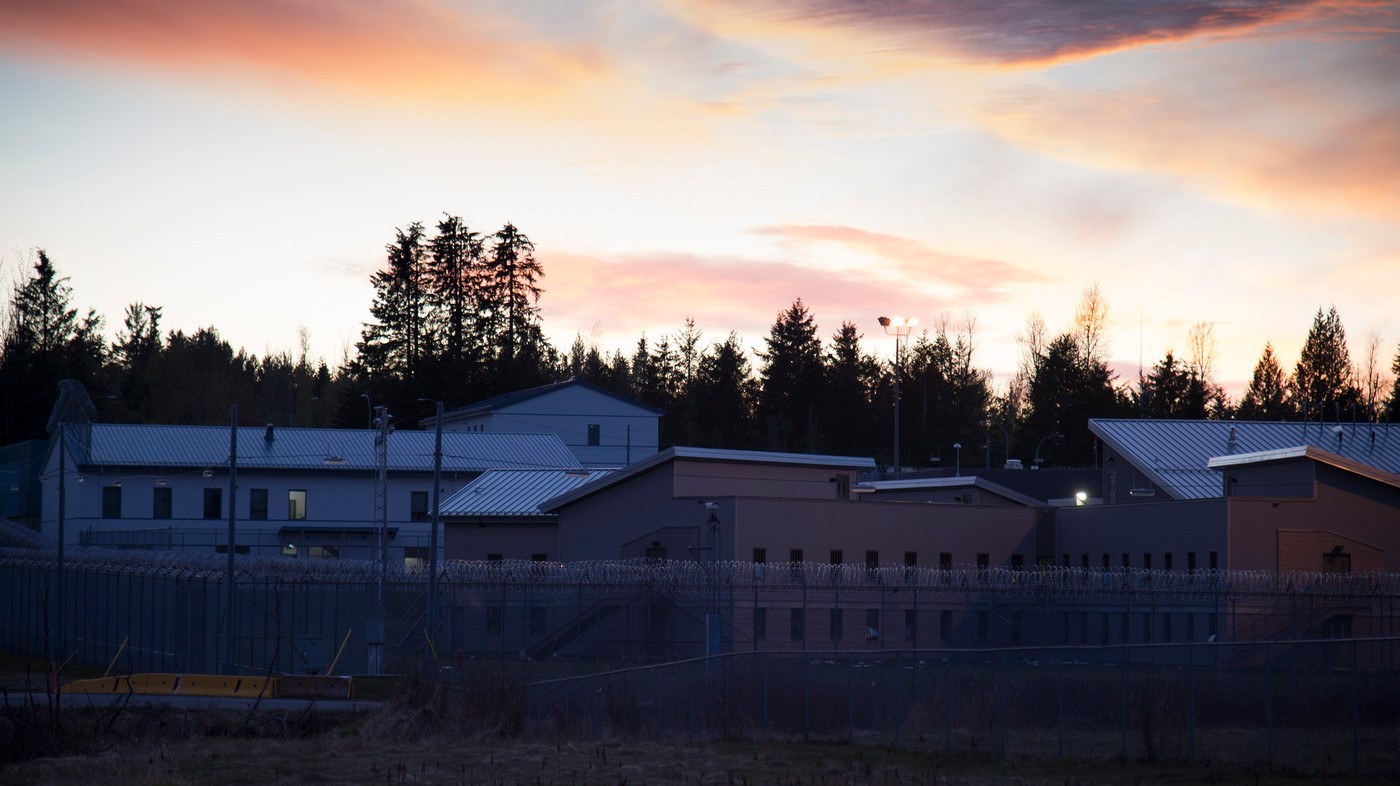

THE MISSION INSTITUTION IS PICTURED TUESDAY, APRIL 14, 2020. COVID-19 HAS INFECTED SEVERAL OF THE INMATES AND CORRECTIONAL OFFICERS AT THE FACILITY. THE CANADIAN PRESS/JONATHAN HAYWARD
Even as the coronavirus outbreak was emerging in federal prisons, staff were being told not to wear personal protective equipment. The Canadian government only began providing masks and gloves after healthcare workers reported unsafe work conditions, despite plenty of early warning that prisons were a ticking time bomb for the spread of the virus.
And now, as of yesterday, 177 federal inmates have tested positive for COVID-19. Provincial institutions have also been hard hit.
The worst outbreak in the country is at Mission Institution, a medium-security prison near Abbotsford, British Columbia, where 60 inmates have tested positive for the virus. One inmate has already died, and others are in hospital. Ten staff members have also tested positive for coronavirus.
Dillan Cote, an inmate at Mission, told VICE on Friday that, right up until the cases began to spiral out of control in the prison, the administration was failing to guard against the virus.
The inmates requested the jail take the temperature of corrections officers showing up for work, to ensure that none were unwittingly transporting the virus into the prison. “We don't get it. They refused that,” Cote said. The inmates requested that they be fed in their cells, rather than all 250 of them crowding into the cafeteria. “It was denied.”
On April 3, after they began reporting cases, Mission put the entire prison on lockdown.
“We didn't even have showers for [the first] five days of the lockdown,” Cote said. Since then, inmates have only been let out for 10 to 20 minutes at a time, sometimes every other day, to shower and make a phone call. “No exercise, no fresh air.”
“One of the guys who is sick is one of the unit cleaners,” Cote said. “And he was out the other day cleaning the unit.” Cote says their cleaning supplies are so diluted with water that he’s not even sure it’s helping.
The conditions are putting the entire prison on edge, he said.
“I feel like the whole jail is on the verge of having a freak out, or doing something,” Cote said. “Because they're treating us poorly. We're not getting fed properly. You know, it takes a toll on your mental health, for sure.”
Even since they’ve been in lockdown, the prison is not taking basic steps to prevent transmission of the virus.
“I just asked the officer today: Why aren't we getting hand sanitizer in there? They’re like: ‘Because you guys drink it,’” Cote said.
As the pandemic unfolded, and cases began to emerge in federal prisons, the Trudeau government repeatedly insisted it had the outbreak under control.
On March 13, Correctional Services Canada said that they had in place the necessary “medical responses, equipment requirements, and protocols” for an influenza outbreak. On March 23 they wrote that “employees are actively screening anyone that must enter institutions.” Two days after that they wrote that they had taken stock of their personal protective equipment and that they would “purchase additional supplies as necessary.” The same day, they wrote that they had “distributed additional soap, cleaning supplies and hand sanitizer to staff and inmates.”
VICE wrote in late March that few of those precautions were actually being implemented.
But by April 2, healthcare workers on British Columbia’s lower mainland—the area which includes MIssion—said they were not being given adequate protection. A letter to Correctional Services Canada, provided to VICE, said: “We feel that the direction for healthcare staff to not use PPE (ie gloves and mask) during the 'hands on' intake process of inmates, who are being placed in the Medical isolation Unit, creates an unsafe work environment."
While Chief Public Health Officer Theresa Tam says testing is key to fighting COVID-19 in prisons, just 533 inmates have been tested since the pandemic began. The federal prison population sits at about 15,000.
A new directive only went out on April 8, encouraging all staff to wear masks. Even then, the administration is “dolling [PPE] out as they see fit,” a healthcare worker says. Multiple sources inside these institutions say some corrections officers are not wearing masks.
Inmates at more than a half dozen prisons across the country have not been given masks.
Prison transfers have continued as well. An inmate from Mission was moved to another facility nearby, and later tested positive. Sherri Maier, a prison advocate, was told by inmates at other institutions in British Columbia, and as far away as Saskatchewan, that inmates from Mission are being transferred into those institutions.
“This is ridiculous, but seems to be the plan CSC has taken,” Maier said. “Rather than release guys, they transfer them.”
There are several federal prisons near Mission which, one healthcare worker says, are not preparing. “There’s no cases there, so they’ve got their heads in the sand and their fingers crossed,” they said.
Calls have mounted for Correctional Services Canada to begin releasing inmates.
Last Thursday, I requested an interview with Public Safety Minister Bill Blair. “We aren’t able to accommodate an interview today,” his office responded Friday.
While he had no time to speak to journalists, Blair spent that Friday evening on a Facebook townhall with a Liberal MP. On that call, Blair was asked about releasing inmates.
“I can tell you that 600 people have already been released just in the last month that we identified as being eligible for release,” Blair said, though he clarified Monday that most of those 600 inmates were released as part of their regular parole eligibility.
Cote is not eligible for parole for another few years. The guy in the cell next to him, however, is slated to be released in six months. “He's wondering if he can get out, because his life's in danger,” he said. Other inmates are still being sent back to prison on minor parole violations.
One offender, who was released earlier this month from a CSC-run halfway house in Toronto on a 14-day medical leave pass, was told to return to the facility this week because his pass expired. One of the offenders in the halfway house has COVID-19 symptoms, he said.
Provinces, meanwhile, have taken drastic steps to empty out jails. Ontario and the Northwest Territories have reduced their prison population by a quarter. The courts have been weighing the threat of COVID-19 heavily in deciding bail and sentencing. Government lawyers, however, are still seeking jailtime for many offenders.
For weeks, Minister Blair’s office has refused interview requests on the crisis hitting Canada’s prisons. While various members of Trudeau’s cabinet involved in the pandemic response have participated in daily media briefings, Blair has not been available to journalists. Meanwhile, Correctional Services Canada has refused to provide basic information about the outbreaks.
There is a lot of room for things to get worse. The Toronto Star has reported that 60 inmates at a provincial jail in Brampton have tested positive for the virus. In America, a myriad of prisons are experiencing massive outbreaks, including the notorious Rikers prison, where more than 350 inmates are sick.
Follow Justin Ling on Twitter.
Food Workers Are Dying at Meat Processing Plants Where Social Distancing Is ‘Almost Impossible’
"Every day we worry about this virus.”
NOT JUST IN THE USA BUT IN ALBERTA TOO
By Paul Blest Apr 24 2020
![]()
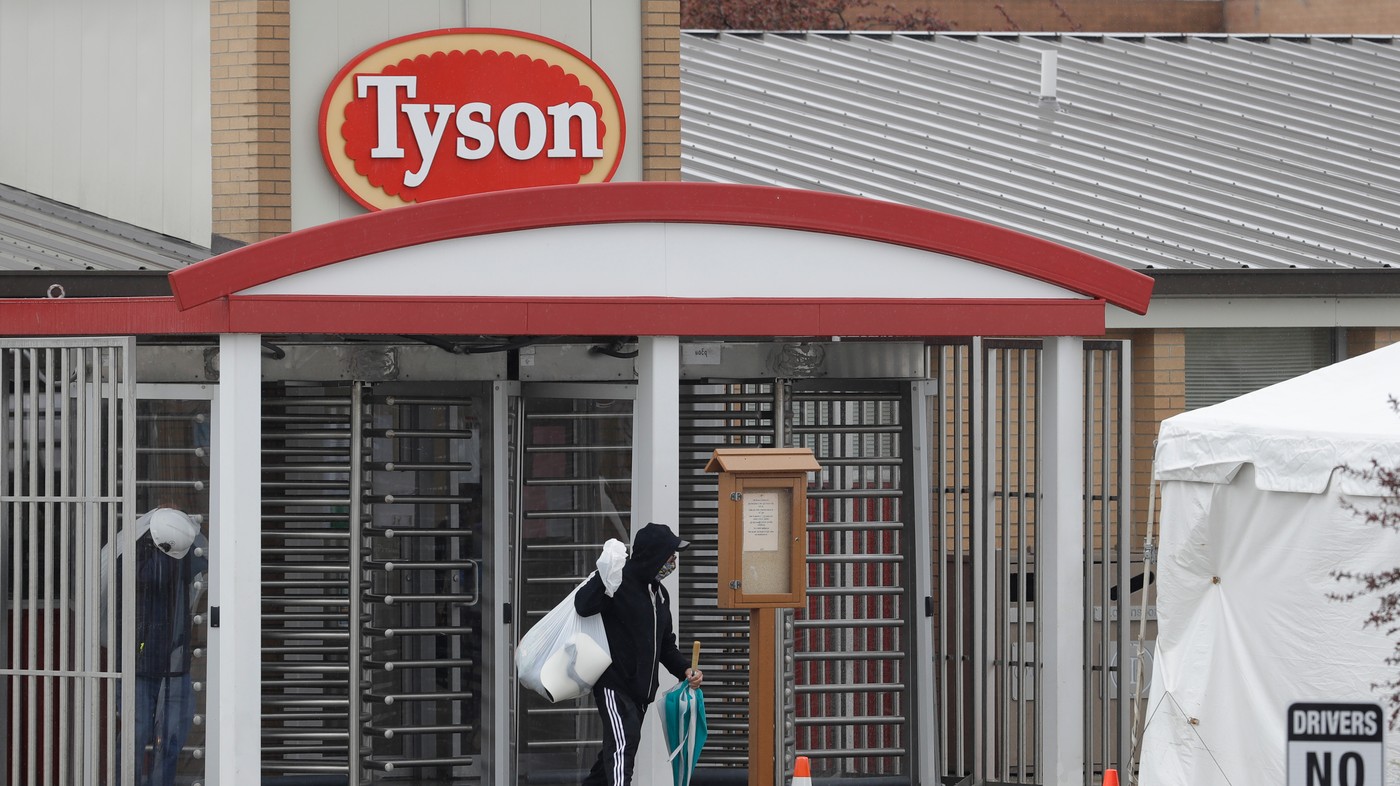
AP PHOTO/DARRON CUMMINGSA Tyson Fresh Meats plant employee leaves the plant, Thursday, April 23, 2020, in Logansport, Ind. The plant will temporarily close its meatpacking plant in north-central Indiana after several employees tested positive for COVID-19. (AP Photo/Darron Cummings)
More than 5,000 American food workers have been infected or exposed to coronavirus, and at least 13 have died, according to the United Food and Commercial Workers International union.
Members of the union, which represents 250,000 workers in the meat and food processing industries, said on a Thursday press call that conditions at meatpacking plants made it nearly impossible to practice social distancing, even as companies have taken short-term measures to try to keep workers safe.Margarita Heredia, a worker at a JBS pork plant in Iowa, described social distancing inside the plant as “almost impossible. There’s no room.”
Even at plants that have adopted “aggressive” social distancing and safety measures, such as a Cargill beef plant in Dallas, Texas, workers are anxious to come into work, worker and UFCW member Rhonda Trevino said.
“On a normal day we don’t have room for errors, it’s very hard work, and safety is our top priority,” Trevino, who has worked at the plant for more than 25 years, said. “These are not normal days. Every day we worry about this virus.”
The news of infected workers comes as at least eight major meat plants owned by Smithfield, Tyson, JBS, National Beef, and Hormel have shut down in recent weeks, according to a count from Bloomberg. This week, JBS shut down its Worthington, Minnesota facility after seven workers there tested positive for coronavirus.
The closures have taken at least a quarter of U.S. pork production offline indefinitely, although most shutdowns are lasting about two weeks, according to Bloomberg. If coronavirus forces more closures in key parts of the supply chain in the coming weeks and months, economists say that shortages of some meat products could begin as soon as May.
The CDC released a 15-page report on Thursday offering more than 100 recommendations for how Smithfield can improve conditions at its production plant in Sioux Falls, SD, which has nearly 800 workers who’ve tested positive for coronavirus. The plant closed on April 12, and a spokesperson said recently that “living circumstances in certain cultures” helped exacerbate the spread of the disease.
On Thursday, however, the Rural Community Workers’ Alliance and an anonymous worker at Smithfield plant in Missouri filed a lawsuit in federal court alleging that the company wasn’t even allowing workers to pause their work to cough or sneeze. The suit said Smithfield was enacting “punitive measures to ensure its preferred line speed is maintained, including that missing even one piece of meat to clean one’s face could result in punitive employment action.”
The worker and the RCWA also allege that the company hasn’t given employees “any additional break time to wash their hands or to use hand sanitizer,” and even “encourages them to come into work sick.”
A Smithfield executive reportedly told Law.com that the allegations “are without factual or legal merit and include claims previously made against the company that have been investigated and determined to be unfounded.”
This article originally appeared on VICE US.

Trump Is Scapegoating the WHO — But Failed to Confirm a U.S. Representative for 3 Years
Trump and the Senate GOP ignored the World Health Organization. Then came the new coronavirus pandemic.
By Cameron Joseph Apr 20 2020
WASHINGTON — President Trump has sought to pin the blame for his administration’s disastrous response to the novel coronavirus on the World Health Organization, painting it as too corrupt and scared of China to label the novel coronavirus a pandemic until far too late.
But the Trump administration and Senate Republicans never bothered to confirm a permanent representative for the United States’ seat on the WHO’s executive board, a sign of how little attention the administration paid to the global health organization until recent weeks.
Experts say that left the U.S. without a well-established senior voice in the U.N.’s global health body, surrendering influence to China as it worked to cover up the extent of the growing COVID-19 epidemic in Wuhan, and weakened America’s influence on the body during critical early-February meetings when the response to the emerging crisis was debated.
Dr. Nils Daulaire, who had the job for one three-year term under President Obama, said the Trump administration’s failure to have a high-level, Senate-confirmed appointee to the board handed China exactly the kind of leverage that Trump has since griped about — and potentially undercut international response to the coronavirus pandemic.
“It’s given an opening to whoever else wishes to move in to occupy the space of power and influence that the United States has voluntarily ceded,” said Daulaire, who served in the WHO role during his time as Assistant Secretary for Global Affairs at the Department of Health and Human Services. “And clearly, China has been particularly interested in raising their power and influence at the WHO.”
Trump has increasingly sought to use the organization as a scapegoat for the U.S. catastrophic coronavirus outbreak, slamming it as “very China-centric” and claimed it had “pushed China’s misinformation.” On Saturday, he claimed “we’re finding more and more problems” with the WHO, without offering any examples.
Last week, he moved to cut the WHO’s funding, even though the organization is the last and best line of defense against pandemics throughout the Third World and the U.S. is its largest contributor. The United States contributes roughly a half-billion dollars a year to the WHO, about 20% of the organization’s budget.
3-year absence
But Trump and the GOP-controlled Senate gave up some of the leverage the U.S. might have had at the WHO by failing to confirm a delegate to the executive board. Executive board seats last for three-year terms, with representatives required to be “technically qualified in the field of health.” The U.S.’ latest term on the board, the WHO’s equivalent of the United Nations Security Council, started in 2018 after a required year off in 2017.
But the last Senate-confirmed U.S. representative on the WHO’s executive board was then-Centers for Disease Control Director Tom Frieden, whose term expired around the time Obama left office.
It wasn’t until 10 months after the United States’ current term began in 2018 when Trump nominated Admiral Brett Giroir, the assistant secretary for health at the Department of Health and Human Services, for the job.
Giroir, a four-star admiral in the U.S. Public Health Service Commissioned Corps, is a medical doctor with a background in infectious diseases who has previously worked on pandemic response. He's a well-qualified and relatively uncontroversial pick by Trump standards. And while Democrats have raised concerns about his views on reproductive issues, he was confirmed by the Senate for his current role at HHS by a voice vote and has met with little Democratic resistance for this nomination.
But since his initial nomination, the White House, Senate Majority Leader Mitch McConnell (R-Ky.), and the rest of the Senate Republican leadership have shown no urgency about filling the appointment.
Giroir’s nomination has sat for so long that the White House had to renominate him twice — once at the beginning of 2019 and again on March 18, 2020, three months after his nomination had expired (which happens at the end of the Senate’s calendar year). His nomination sailed through the Senate Foreign Relations Committee in April 2019, and all he needed for confirmation was for McConnell to slot Senate floor time for a vote.
But while McConnell has successfully confirmed hundreds of judges and other administration officials for Trump, including many who faced much stiffer resistance from Democrats, he never bothered giving Giroir a vote.
“He went through the committee pretty easily. It’s been on the Senate floor,” a Republican Senate Foreign Relations Committee aide told VICE News, saying why he never got approved by the Senate was “a White House or McConnell question.”
AWOL at the WHO
The Giroir nomination waited so long that he technically needs to go through committee once again before a floor vote.
The Senate Foreign Relations Committee is now working in a bipartisan fashion to rush through Giroir’s confirmation. Sources tell VICE News that Democrats and Republicans agreed Thursday night to waive the committee business meeting normally required for nominees to send him to the full Senate floor, with the hopes of moving his nomination along. There are promising signs he might be able to be confirmed to the WHO quickly by unanimous consent.
But at this point, that’s closing the barn door after the horse is out.
As he often does with favored staff, Trump has used Giroir as a jack-of-all-trades, plugging him in to backstop various roles. Giroir stepped in as temporary head of the Food and Drug Administration for a few months in late 2019.
And Giroir has his hands full now: Trump named him as the country’s “testing czar,” a day after the head of the CDC couldn’t say who in the administration was in charge of making sure Americans could have access to COVID-19 tests.
Asked why Giroir was never confirmed for a seat on the WHO, a senior Trump official said Trump “has consistently prioritized the health and safety of the American people, including by nominating the most qualified professionals to key positions.”
“We have been clear that Congress should act swiftly to confirm these and the many other outstanding nominations,” that official said.
Trump himself has howled about the Senate’s failure to confirm his nominees, even threatening to take the unprecedented and constitutionally questionable step of forcing Congress to adjourn so he could ram through some nominees without a vote. But Giroir wasn’t one of the positions he mentioned he wanted filled in a recent Rose Garden rant.
McConnell aides declined to respond on-record to inquiries about the lengthy delays.
In comes a pandemic
The U.S. absence at the WHO meant that at the organization’s February executive board meetings, held as the coronavirus was hurtling toward pandemic proportions, America’s seat at the table was filled not with a medical expert with political clout like Giroir but with U.N. Ambassador Andrew Bremberg and lower-level staff.
Bremberg is not a doctor, and while he has some public health experience, he had spent his career in domestic policy before being confirmed as Trump’s permanent representative to the U.N. in Geneva three months earlier in October.
Bremberg headed the U.S. delegation at WHO’s key February annual meeting, which included debate over how the world should respond to the coronavirus and prepare for other pandemic threats.
“When those really important political issues come up, it’d be important to have someone with the skills for that. I wouldn’t trust Bremberg for that. But I certainly would Brett Giroir — he has the bona fides,” said Kenneth Bernard, who served as a senior adviser on pandemics and biodefense to Presidents George W. Bush and Bill Clinton. “Bremberg is a domestic policy political appointee, while Brett Giroir is a professional scientist and health expert first and a political appointee second.”
That doesn’t mean the U.S. was flying blind at the meetings. As the Washington Post reported Sunday, the U.S. had more than a dozen researchers, physicians and public health experts working at the WHO’s Geneva headquarters as the novel coronavirus emerged late last year, and they transmitted real-time information about its spread in China back to the Trump administration. But their warnings seemed to go largely unheeded.
This lack of administration emphasis on the WHO has left career officials frustrated.
“Pushing for change at WHO clearly has not been a priority until a week ago.”
“The United States has not officially filled its appointment on the WHO executive board, and has instead sent a rotation of mid-level officials who don’t have the clout to push for real reform in the institution,” said one administration official. “Pushing for change at WHO clearly has not been a priority until a week ago. [That] has been a missed opportunity.”
Daulaire warned that lacking a Senate-confirmed, high-level WHO executive committee member, the U.S. team may not have received the same kind of intelligence briefings as usual and might have headed to the February WHO meetings ignorant about U.S. intelligence showing the growing pandemic risk of the coronavirus.
The intelligence community began raising the alarm about the virus’ threat in January, and Daulaire said briefings on the coronavirus could have given the U.S. delegation “significantly more knowledge” about the looming pandemic than what was publicly available.
He also said if the U.S. had been forceful in warning the WHO was moving too slowly to confront the pandemic, and less deferential to the organization’s initial findings, it would have “lit a fire” under the WHO and potentially prompted a more vociforous response.
It’s unclear whether this intelligence was shared with the U.S. delegation ahead of February’s WHO executive board meetings, which set the WHO’s agenda for the year. The State Department’s Bureau of International Organization Affairs oversees U.S. participation at the WHO, and its assistant secretary left office last November after the department’s inspector general issued a report blasting him for harassing and verbally abusing career employees he didn’t see as sufficiently loyal to Trump.
When asked if Bremberg and the U.S. delegation were briefed on this intelligence, a senior administration official said “those representing the U.S at any meeting are fully briefed to enable them to appropriately represent the United States.”
Bremberg’s most vocal efforts at the meeting were sparring with China for continuing to block Taiwan from WHO information as coronavirus broke out internationally and defending America’s decision to restrict travel from China, which the WHO had not recommended.
On Feb. 6., even as 23 countries had already reported cases of COVID-19, Bremberg voiced praise for China’s response to the virus
“We deeply appreciate all that China is doing on behalf of its own people and the world, and we look forward to continuing to work together as we move ahead in response to the coronavirus,” he said.
The WHO didn’t declare the virus a pandemic until more than a month later, but Bremberg congratulated the organization “on progress made an emergency preparedness under the International Health Regulations.”
THIRD WORLD USA
Southern Republicans Lifting Coronavirus Lockdowns Are Also Keeping the Working Poor From Health Coverage
The six states banding together to lift coronavirus restrictions have also refused to expand Medicaid, leaving millions without health insurance.
By Cameron Joseph Apr 24 2020
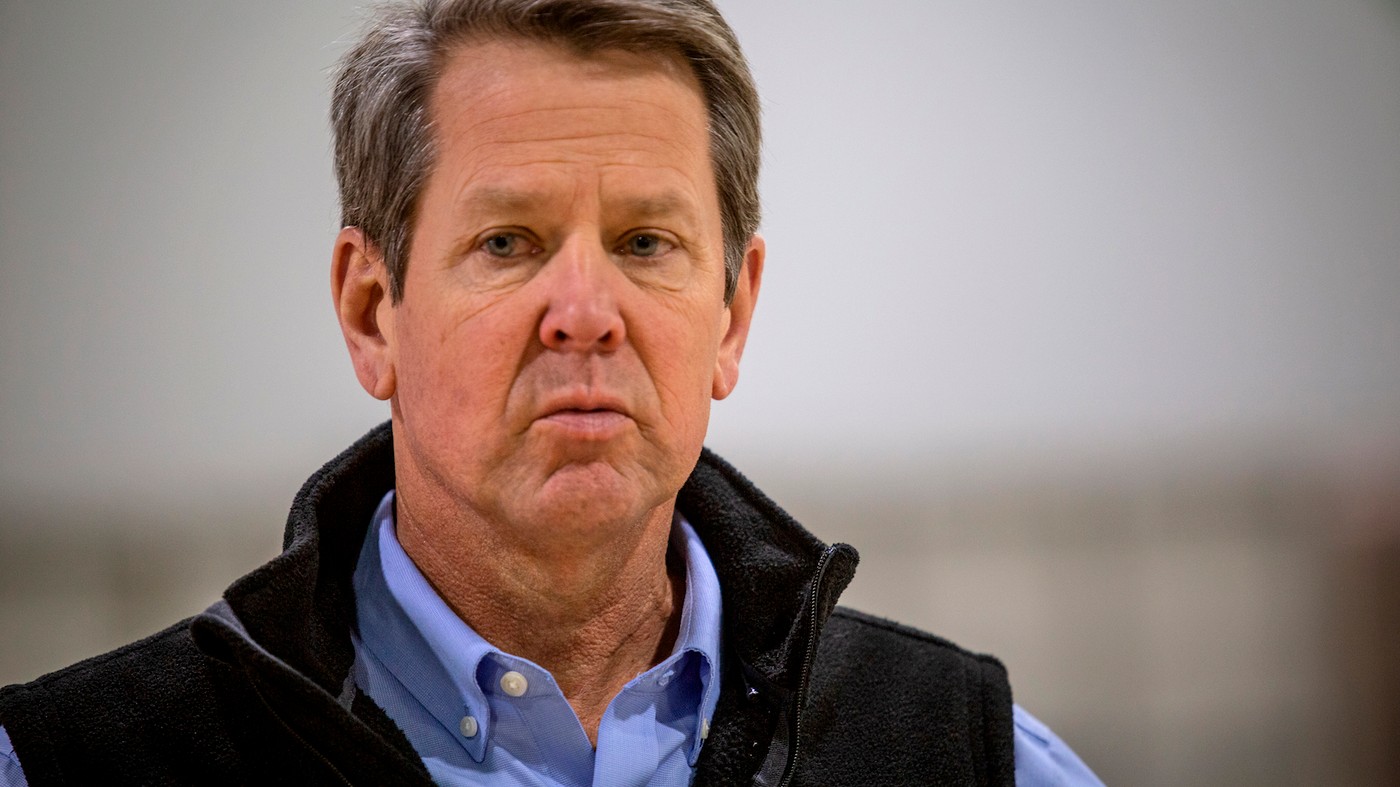
Cover: In this April 16, 2020, file photo, Georgia Gov. Brian Kemp listens to a question from the press during a tour of a temporary hospital at the Georgia World Congress Center in Atlanta. Kemp plans to have many of his state's businesses up and running again as soon as Friday, April 24. (AP Photo/Ron Harris, Pool, File)
Georgia reopened much of its economy on Friday, forcing workers back to their jobs and into danger weeks before medical experts and the Trump administration say is safe.
Georgia Gov. Brian Kemp (R) decreed that businesses of all kinds including hair and nail salons, tattoo parlors, massage parlors, gyms, and bowling alleys can all reopen, so long as they practice social distancing. Houses of worship can hold services once again. Theaters and dine-in restaurants can reopen on Monday.
Kemp is one of a half-dozen southern GOP governors who are rushing to lift coronavirus restrictions faster than the experts say they should. Those states also refused to expand Medicaid, leading to some of the highest uninsured rates in the country.
That means if workers do get sick as a result of being forced to return to work, many won’t have health insurance and could face financial ruin if they go get treatment..
“The venn diagram of bad decisions that the elected leaders in these states are making when it comes to people’s health is nearly perfect,” said Maura Calsyn, the Managing Director for Health Policy at the liberal Center for American Progress.
Alabama, Florida, Georgia, Mississippi, South Carolina, and Tennessee formed a regional pact with Georgia to end coronavirus restrictions. They’re all run by Republicans loyal to President Trump who are moving much faster than any other region of the country to lift stay-at-home orders, even as coronavirus cases continue to climb throughout the region.
All six states also rejected Medicaid expansion, even as 36 other states adopted the plan to help more poor people get health coverage.
These states have refused for a decade to expand Medicaid, largely because it was a major plank of Obamacare, and the Republicans in those states refused to consider any part of Obama’s signature law even though it would have cost them little and helped ensure hundreds of thousands of people.
They make up six of the 14 states that refused to embrace the policy, including nine in the South. These holdout states have almost uniformly higher uninsured rates than anywhere else.
Almost 5 million more people would be eligible for healthcare if every state offered expanded Medicaid enrollment and took up the federal government’s offer to pay for most of the costs of insuring everyone who earns below 138% of the poverty line. Fully 92% of Americans who can’t get health insurance because their state governments have blocked Medicaid expansion live in the South, according to the nonpartisan Kaiser Family Foundation.
In these states, like many others, African Americans and Hispanics are much more likely to lack insurance than white people, and make up large portions of the uninsured.
“The people who are going to be asked to go back to work are the people at highest risk.”
“The people who are going to be asked to go back to work are the people at highest risk because of systemic racism and resulting public health disparities. And if they go back to work, because these states have blocked expanded Medicaid it’s very likely that a high number of them don’t have health insurance,” Calsyn said.
All 14 states who didn’t expand Medicaid are at or near the top of the list of states with highest uninsured rates.
Oklahoma and Georgia are tied for the second-highest percentage of uninsured people in the country — fully 14% of Georgians and Oklahomans didn’t have health insurance in 2018. Florida is next on the list with 13% of people lacking insurance. Only Texas is ahead of them in the rate of uninsured. And Texas Gov. Greg Abbott (R) said Thursday that an order allowing “massive” reopening of businesses was imminent, and could come as soon as Monday.
Oklahoma Gov. Kevin Stitt (R) allowed personal care stores like hair salons, tattoo parlors and dog grooming salons to reopen Friday, and restaurants, gyms, churches and other stores can open on May 1. South Carolina Gov. Henry McMaster (R) has already allowed most businesses to reopen. Tennessee isn’t far behind: Gov. Bill Lee (R) said he won’t extend the state’s stay-at-home order past April 30. Mississippi Gov. Tate Reeves’ (R) stay-at-home order ends on April 27, though he hasn’t laid out an exact plan for reopening he said Wednesday that the state will “continue to loosen restrictions” next week. Alabama Gov. Kay Ivey (R) is the only one in the group who’s yet to announce at least a partial end to her state’s stay-at-home order.
Idaho, a red state without Medicaid expansion, is moving fast to ending stay-at-home orders as well, as are North Dakota and Ohio, two red states that did expand Medicaid. Montana and Colorado, two states that have Democratic governors and expanded Medicaid, already moved to loosen stay-at-home orders.
But the scary prospect of people having to work while being blocked from healthcare access is largely a southern Republican phenomenon.
“They’ve already played politics with people’s healthcare by not expanding Medicaid and continuing this enmity towards Obama. Now they’re playing politics with the pandemic,” said Brad Woodhouse, a Democratic strategist who heads the pro-Obamacare group Protect Your Care. “It’s morally indefensible.”
The Victims of Canada's Deadliest Mass Shooting
At least 22 people, including an RCMP officer, a teacher, and two health care workers, were killed in a mass shooting spree over the weekend in Nova Scotia.
By Manisha Krishnan, Anya Zoledziowski, and Anne Gaviola Apr 20 2020

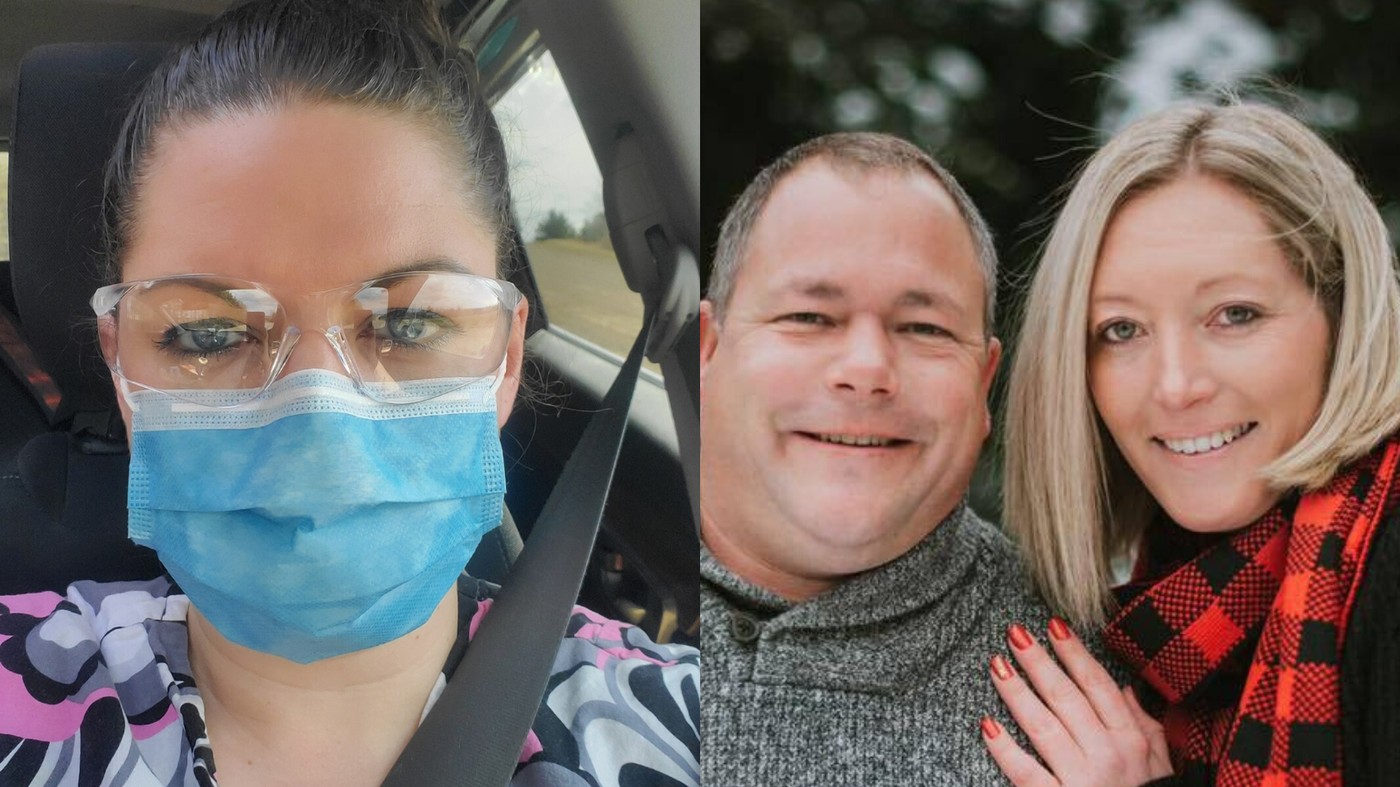
NOVA SCOTIA SHOOTING VICTIMS INCLUDE HEALTH CARE WORKER KRISTEN BEATON, LEFT, AND CORRECTIONS OFFICERS SEAN MCLEOD AND ALANNA JENKINS, RIGHT.
(Updated on April 23, 11 a.m. EDT) A Nova Scotia man who went on a shooting spree Saturday night and well into Sunday has killed at least 22 people.
The rampage marks the worst mass murder in modern Canadian history.
The victims include RCMP veteran Const. Heidi Stevenson, an elementary school teacher, and two health care workers.
Speaking to Canadians Monday morning, Prime Minister Justin Trudeau described the shooting as an act of “senseless violence” that took place in small towns, where people look out for each other.
“These communities are in mourning and Canada is in mourning with them,” Trudeau said. “We are so sorry for your loss. Such a tragedy should have never occurred. Violence of any kind has no place in Canada.”
If you'd like to share a story about a loved one who was killed in the Nova Scotia shootings, contact Manisha Krishnan by email at manisha.krishnan@vice.com or Anya Zoledziowski at anya.zoledziowski@vice.com.
Trudeau said public vigils can’t take place because they would violate physical distancing measures in place to fight the COVID-19 pandemic. Instead, a virtual vigil will be held at 7 p.m. on Friday. It will be accessible through a Colchester community page on Facebook.
Here’s what we've learned about the victims so far. This list will be updated.
Heidi Stevenson
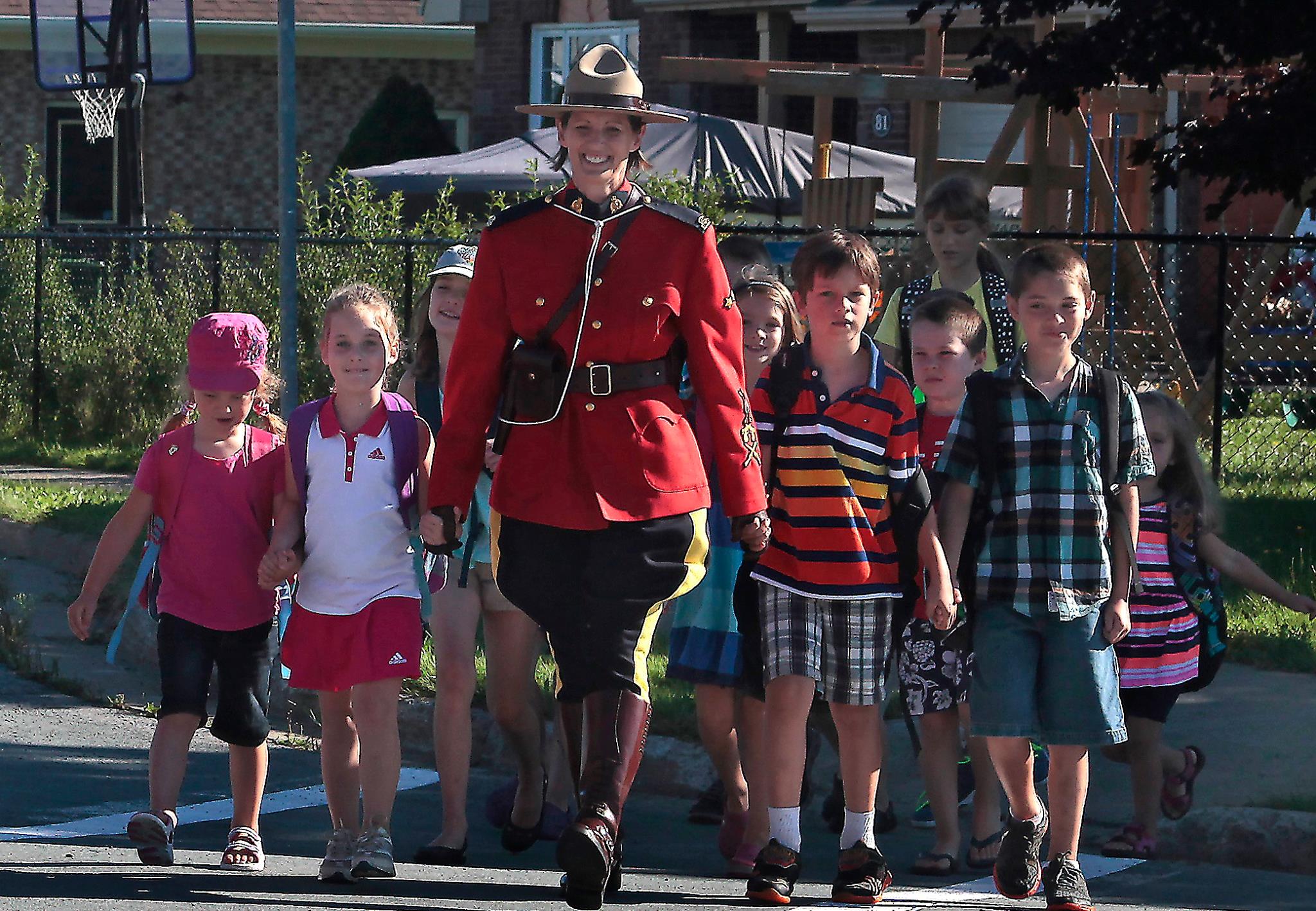
HEIDI STEVENSON. PHOTO COURTESY OF RCMP
Const. Heidi Stevenson, a 23-year veteran with the Royal Canadian Mounted Police (RCMP), was one of the first victims identified following the deadly shooting spree in Nova Scotia. She was responding to the active shooter when she died, but the circumstances of her death have not been confirmed yet.
“She died protecting others,” Prime Minister Justin Trudeau said on Monday. “She was answering the call of duty—something she had done every day she went to work for 23 years.”
Stevenson, who is originally from Nova Scotia, was a wife and mother of two children, ages 10 and 13. Her husband, Dean Stevenson, teaches at a Halifax-area high school, according to the Globe and Mail.
“There are no words to describe their pain,” Nova Scotia Commanding Officer Lee Bergerman told reporters on Sunday. “Two children have lost their mother and a husband has lost his wife. Parents have lost their daughter and countless others lost an incredible friend and colleague.”
Lisa McCully
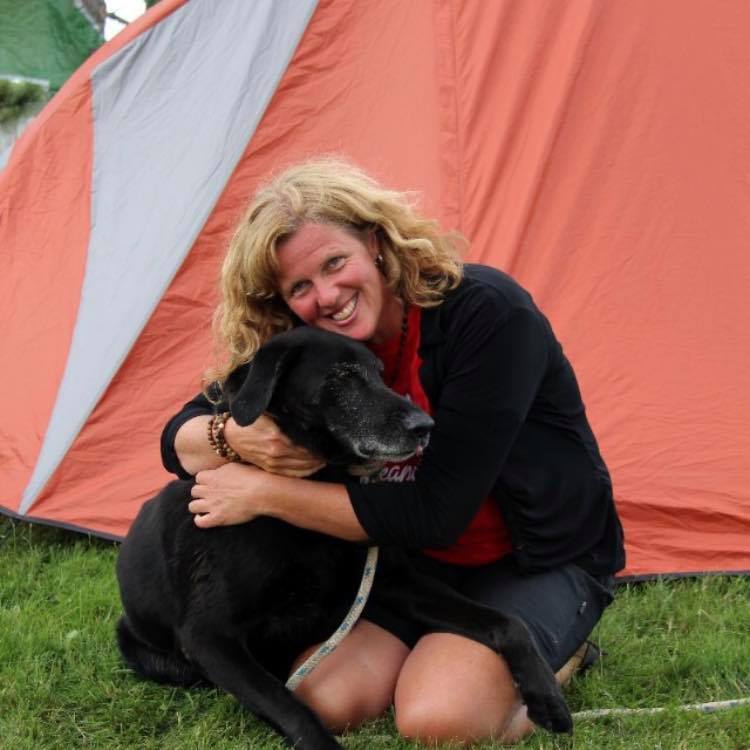
LISA MCCULLY. PHOTO VIA FACEBOOK
Lisa McCully was a mother of two young girls and a grade 3 and 4 teacher at Debert Elementary School.
Her sister, Jenny Kierstead, wrote in a Facebook post Sunday, “This is so hard to write but many of you will want to know. Our hearts are broken today as we attempt to accept the loss of my sister, Lisa McCully, who was one of the victims of the mass shooting in Portapique last night (Saturday).”
Last month, McCully posted a video to Facebook of her and two young kids singing “Tonight You Belong to Me.”
“Here’s a little goodnight song to all our family and friends. We miss you,” McCully says in the video as she plays the ukulele.
Paul Wozney, the president of the Nova Scotia Teachers Union, said in a statement posted to Facebook on Sunday, “9300 NSTU hearts are broken along with those of her colleagues and students at Debert Elementary, as well as her family and friends who knew her not only as a passionate teacher but as a shining love in their lives.”
Ruth Janes, a close friend of McCully’s who said she talked to her daily, has started a GoFundMe page for McCully’s two children. “Lisa did absolutely everything and would do absolutely anything for her two kids (and anyone else’s too,” the page says.
Heather O'Brien
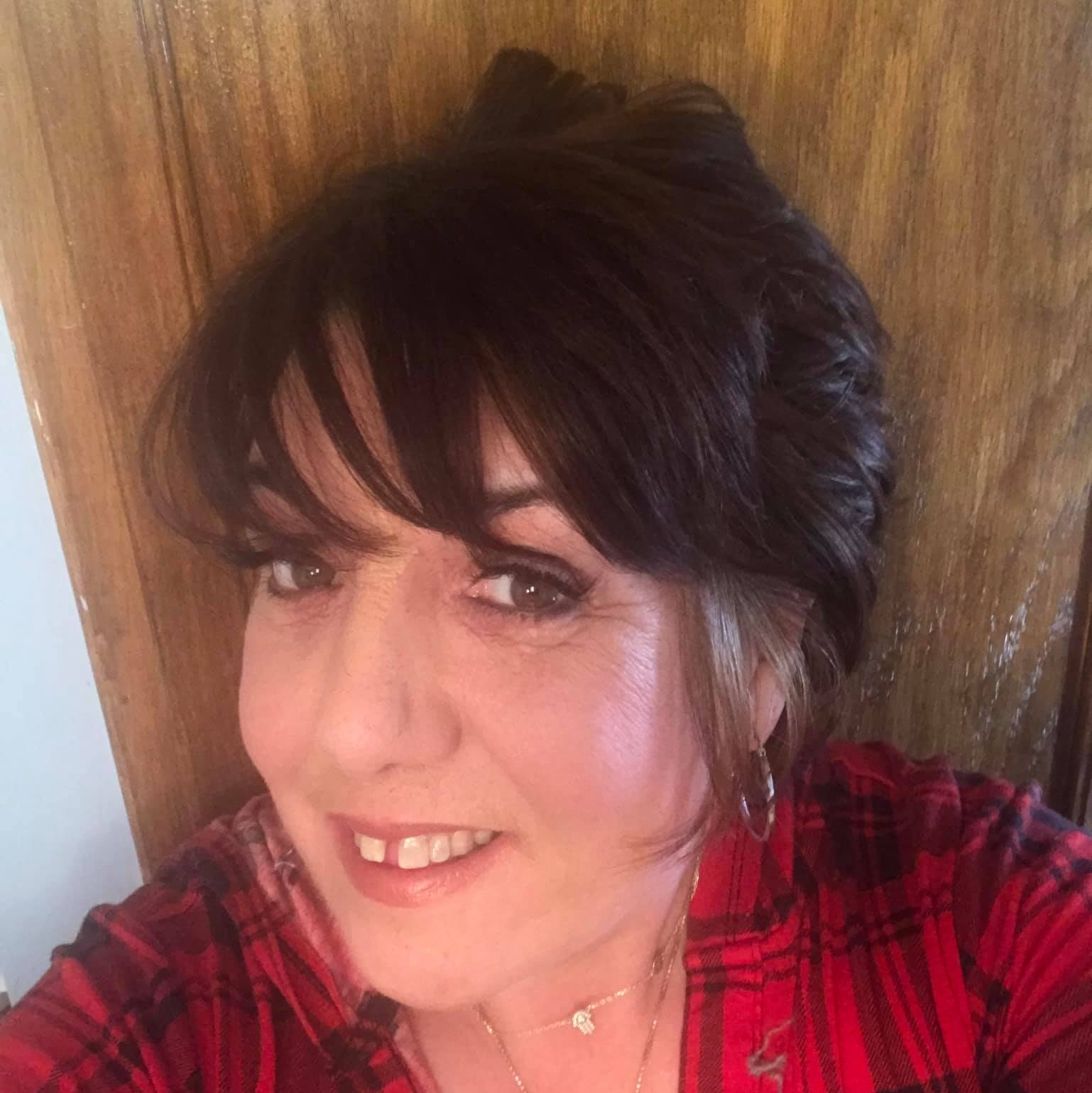
HEATHER O'BRIEN. PHOTO VIA FACEBOOK
Heather O’Brien is a wife, mother, grandmother, and nurse. She worked as a licensed practical nurse with the Victorian Order of Nurses team for about 17 years.
“She shared her deep caring of others,” said VON president, Jo-Anne Poirier, in a statement released Monday.
O’Brien’s daughter confirmed the death in a Facebook post Sunday: “A monster murdered my mother,” said her daughter, Darcy Dobson, adding that by 10:15 p.m. Saturday, her mother was gone. In the post, Dobson said she wants her mother to be remembered for her kindness, her passion for her career as a nurse, and “the way her eyes sparkled when she talked to her grandchildren.”
A GoFundMe page has been set up by a close family friend in support of O’Brien’s husband Teddy.
Kristen Beaton
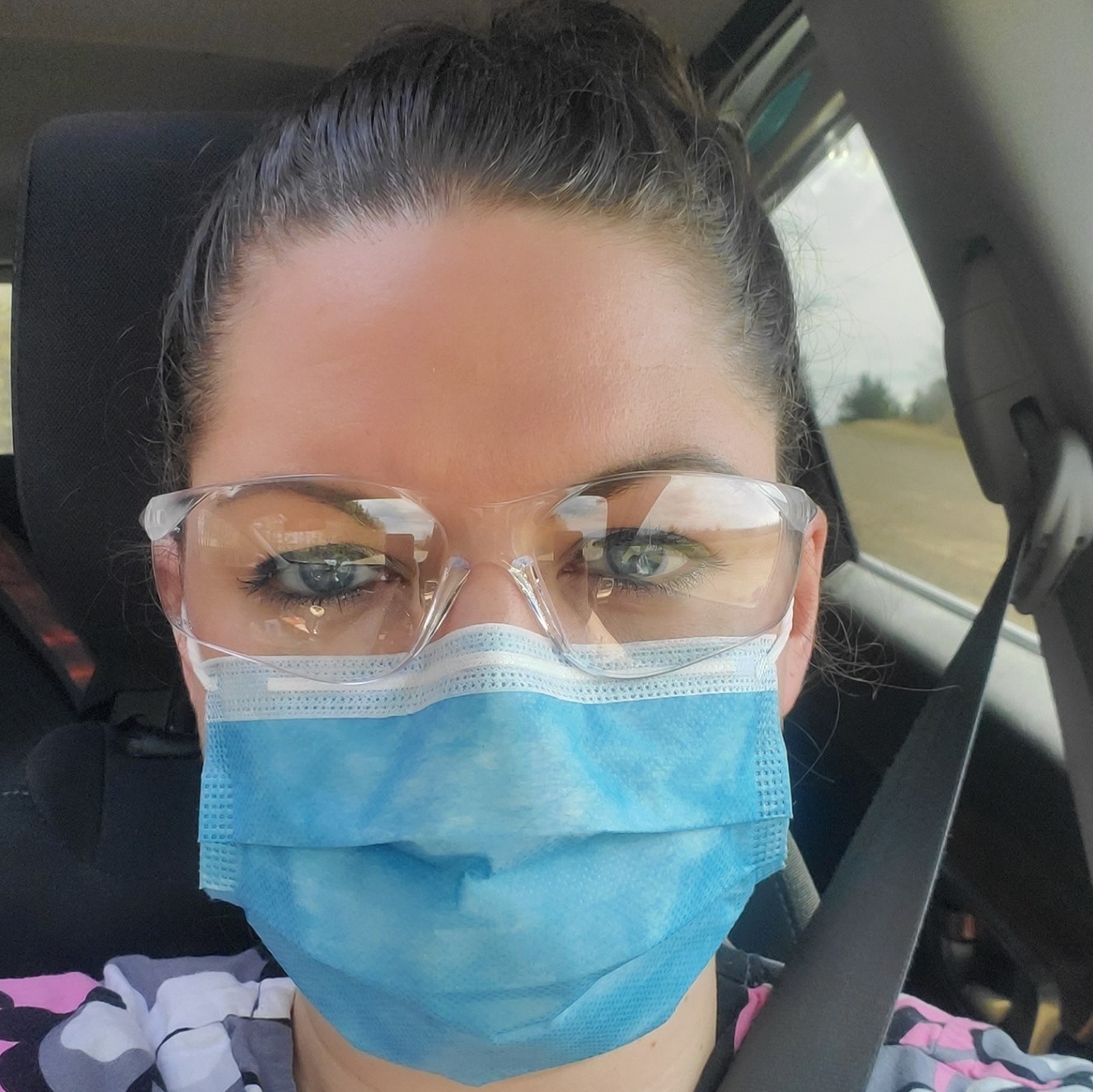
KRISTEN BEATON. PHOTO VIA FACEBOOK
Kristen Beaton was a continuing-care assistant for the Victorian Order of Nurses for more than five years.
According to the Nova Scotia Government and General Employees Union (NSGEU), Beaton dedicated her life to caring for the province’s most vulnerable. “She was killed on the job, doing this critical work during the COVID-19 pandemic,” the NSGEU said in a statement on Monday. “In the aftermath of her loss, her husband has asked us all to use our voices to advocate for proper protections and equipment for all of the coworkers who remain on the job during this crisis.”
Her husband Nick Beaton posted on Facebook Monday morning, “She cried (every day) before and (every day) after work scared to bring this covid home to her son she loved more than I could even imagine anyone could love one person.”
He goes on to say that she was doing a job she truly loved. “So please for Kristen’s sake protect the ones who are protecting us,” he said.
Nick told CTV that Kristen was pregnant with their second child and they were planning to tell friends and family the news this week.
A GoFundMe page has been set up to help “the two loves of her life”: Nick and their 3-year-old son, Dax

Corrie Ellison
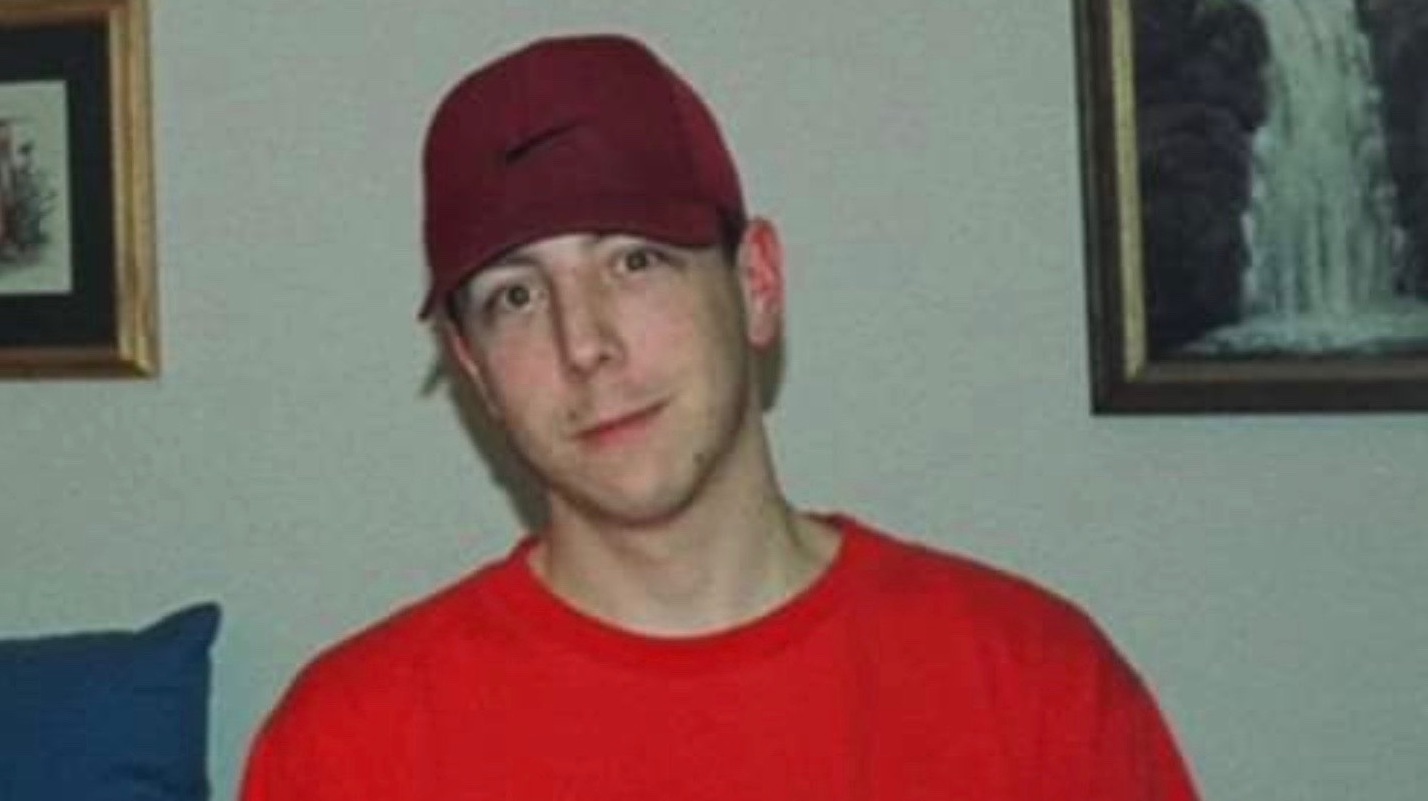
CORRIE ELLISON. PHOTO COURTESY OF ASHLEY FENNELL
Corrie Ellison, 42, and his brother, Clinton, were visiting their father in Portapique when the deadly massacre took place, ultimately claiming Ellison’s life.
The brothers heard a gunshot at about 10 p.m. on Saturday, so they looked outside and noticed a glow caused by a nearby fire, Clinton told CBC News.
Ellison decided to investigate, despite his father’s pleas to stay indoors, and found the blaze. He called his brother and father from the site, urging them to call the fire department.
They would never hear from him again.
Clinton decided to search for his brother after a disconcerting amount of time had passed, flashlight in hand. He found Ellison’s still body on the side of the road—and then turned off his light and ran for his life.
Clinton hid from the shooter for hours in the woods, hoping police would appear.
Clinton said he wants his brother to be remembered for his thoughtfulness and kindness.
"My brother was a really good guy," Clinton said. "He helped people that he could."
It was 3 a.m. on Monday when Ashley Fennel first learned Ellison was one of the victims. She told VICE she immediately sent Ellison a message—asking him to go for a drive—because she didn’t want to believe the news.
“I was hoping they got the wrong person,” Fennel said.
According to Fennel, Ellison was a “beautiful soul,” always ready to help those around him.
The two have been friends for about nine years—since Ellison helped Fennel overcome addiction.
Ellison became a big part of Fennel’s support system; anytime Fennel needed support, Ellison was there, ready to take Fennel out for a coffee.
The two often spent summer days going swimming together. Over Christmas, Ellison helped Fennel with some financial struggles as well, Fennel said.
“It’s hard to believe that this is true,” Fennel said. “Corrie was awesome. I want everyone to know just how special he really is.”
On Facebook, Clinton Ellison shared a photo of him and his brother Corrie as children with their father, the Globe and Mail reported. “RIP my brother,” Clinton wrote in the caption Monday morning. “(He was) killed for going to help someone.”
A woman who referred to Ellison as her cousin took to Facebook to pay tribute to her lost loved one. “Just texted him this (morning) to see if his dad was OK...not knowing he was out (in Portapique) and already killed,” Juliene Henderson wrote.
Jolene Oliver, Aaron Tuck, and Emily Tuck
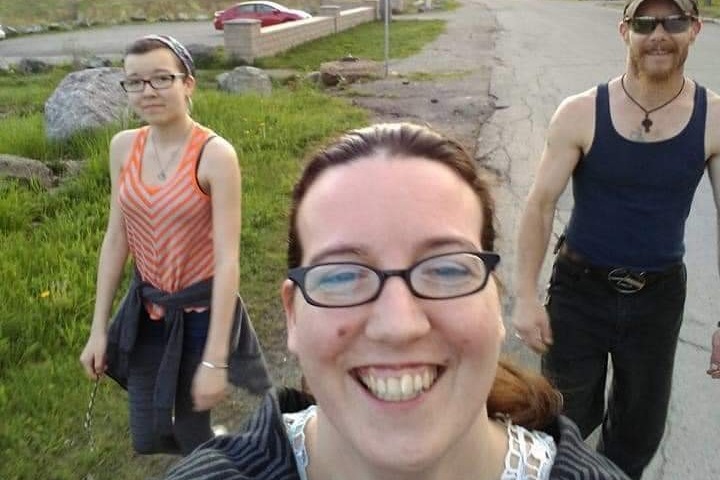
EMILY TUCK, JOLENE OLIVER, AND AARON TUCK. PHOTO VIA GOFUNDME
Jolene Oliver, Aaron Tuck, and their 17-year-old daughter Emily Tuck were killed in their home, according to a GoFundMe page started by Jolene’s sister.
Tammy Oliver-McCurdie wrote that all of the family’s relatives are in Alberta and they need help paying for funeral expenses in another province.
On Facebook, a woman who said her son was Emily’s boyfriend wrote a tribute to Emily.
“This young lady of 17 was one of the smartest girls I know. Could fix anything with her hands cause her dad taught her that and could play strings that made you feel just at peace!” the post said. “(Seventeen) years old graduating this year, still so much life ahead.”
Sean McLeod and Alanna Jenkins
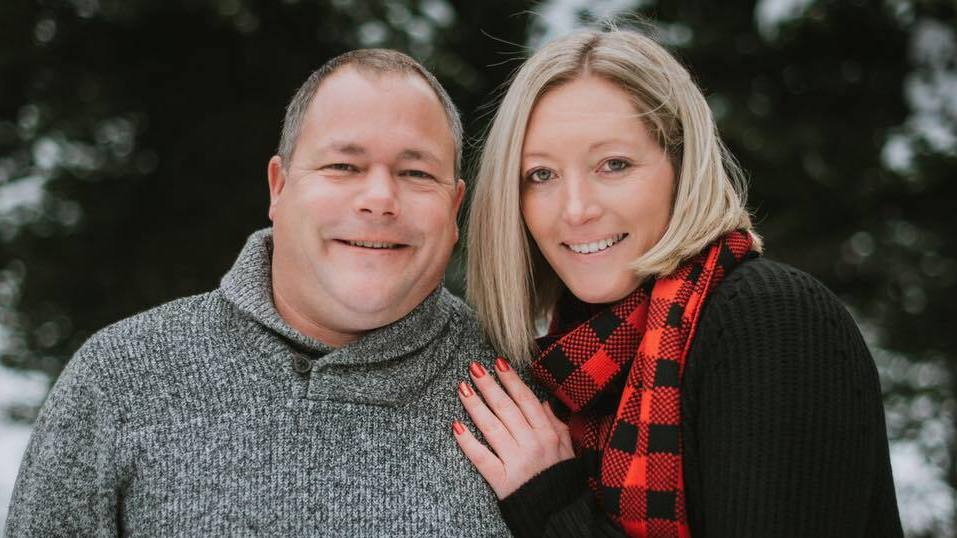
SEAN MCLEOD AND ALANNA JENKINS. PHOTO VIA FACEBOOK
Taylor Andrews, 23, last saw her father Sean McLeod on Friday when he dropped off groceries for her at her home.
Andrews lives with her husband and their 22-month-old daughter Ellie in Debert, Nova Scotia, about 20 minutes from where McLeod, 44, and his partner Alanna Jenkins, 36, lived in Wentworth.
The two corrections officers are believed to have been killed in their home, though Andrews said that still hasn’t been confirmed to her by police.
When McLeod dropped off the groceries, Ellie started shouting “grampy!” excitedly, a word she’d just learned.
“He was sitting in his truck grinning with his phone up taking a picture of her in the window,” Andrews said. She said her dad and Jenkins adored her daughter and helped take care of her often.
“He thought she was the sun. Everything revolved around her. She did no wrong.”
Growing up, Andrews said her dad would be cheering in the stands to support her and her sister during their swim competitions. During hunting season, “he would lug me through the woods to go lay apples,” she said. When he and Jenkins got together in 2015, she said “he finally found the person he was supposed to be with.”
Andrews said Jenkins was more like a best friend than a mother. They went to concerts together, and spent days in the summer hanging out by the river at Jenkins and McLeod’s house.
“She’d make sure she had boxes of wine, my favourite drink, everything, when we went over.”
The couple loved sun vacations. They’d visited Jamaica, Cuba, Mexico, and had planned a trip to Florida this winter that was cancelled due to COVID-19.
Andrews said her father knew the gunman as an acquaintance at best. She said their neighbour, Tom Bagley, went to check on the couple. Bagley was also killed.
She said the road where her dad and Jenkins lived was its own community. They hosted a “camp crawl” where people would go to one another’s yards to have drinks and hang out by a fire.
She said her father worked as a corrections officer for 25 years and couldn’t wait to retire and “have a house full of grandbabies.”
Andrews said it sucks that her family can’t get together to grieve.
“They were both corrections officers so you can imagine the funeral they would have,” she said. “I think they deserve to have that.”
A GoFundMe has been started to support Andrews, her sister, and Ellie.
Tom Bagley
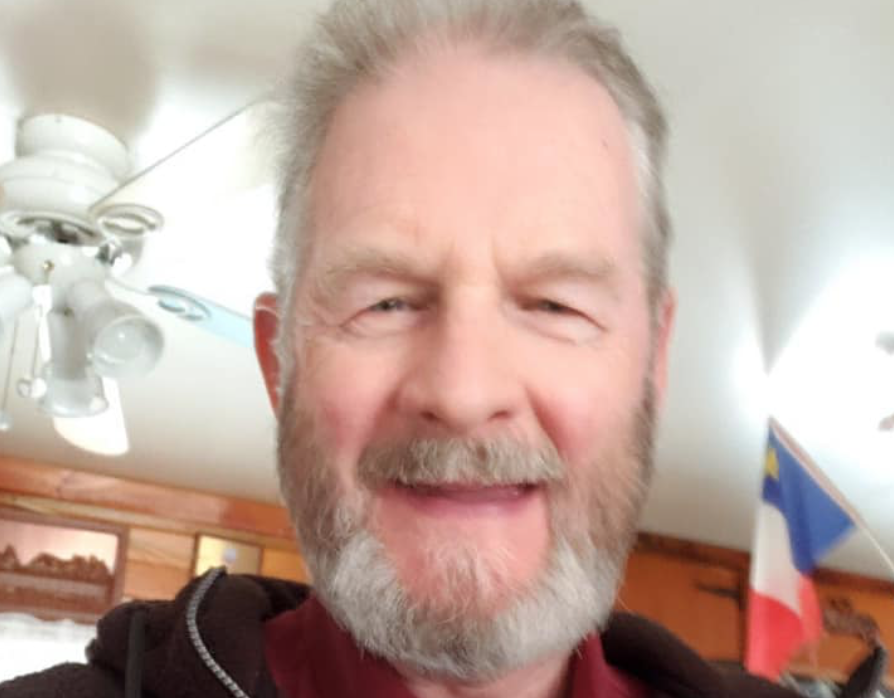
TOM BAGLEY. PHOTO VIA FACEBOOK
Tom Bagley was a volunteer firefighter who worked for three decades as part of the fire brigade at Halifax International Airport up until 2006. As reported by the Chronicle Herald and CBC, Bagley was shot and killed Sunday morning near the explosion on Hunter Road in West Wentworth. He had reportedly been checking in on Sean McLeod and Alanna Jenkins, who were his neighbours, McLeod’s daughter, Taylor Andrews, told VICE.
His daughter Charlene Bagley referred to him as a “beautiful soul” in a Facebook post late Sunday. “He died trying to help which if you knew him, you knew that was just who he was all the time. I know he meant something to so many people.” She said friends and family described him as a hero, and someone who was caring and always making people laugh.
Leah Batstone, a spokesperson for Halifax International Airport Authority, told VICE in an email, “We’d like to share our deepest condolences to his loved ones, and to all the Nova Scotians impacted by this unimaginable situation, at this incredibly challenging time.”
Lillian Hyslop
Lillian Hyslop frequented the Wentworth Valley for her regular hikes, often sporting a bright reflective vest, the Chronicle Herald reported.
Early Sunday, a team of locals started calling everyone who frequently strolled the area, warning of the ongoing shooting spree. By the time someone called the Hyslop residence, Hyslop was already gone.
Hyslop’s husband, Mike, went to find his wife after receiving the harrowing phone call. Police stopped Mike and asked what Hyslop was wearing. Then, they broke the devastating news.
Hyslop was shot dead on the side of the road while out exercising in her neon vest.
Avid hiker Debi Atkinson used to pass Hyslop at the Wentworth Valley all the time. She told the Herald that Hyslop’s life could have been saved if the province issued an emergency alert.
“I could have saved Lillian's life if I had known 45 minutes before that,” Atkinson said.
Atkinson said Hyslop was a friendly, down-to-earth woman who volunteered a lot.
Hyslop’s mother-in-law, Carol Hyslop, confirmed to VICE that Hyslop was one of the victims.
Hyslop’s walking partner and neighbour, Heather Matthews, told CBC News that Hyslop was a kind and quiet person with “great community spirit.”
Jamie and Greg Blair
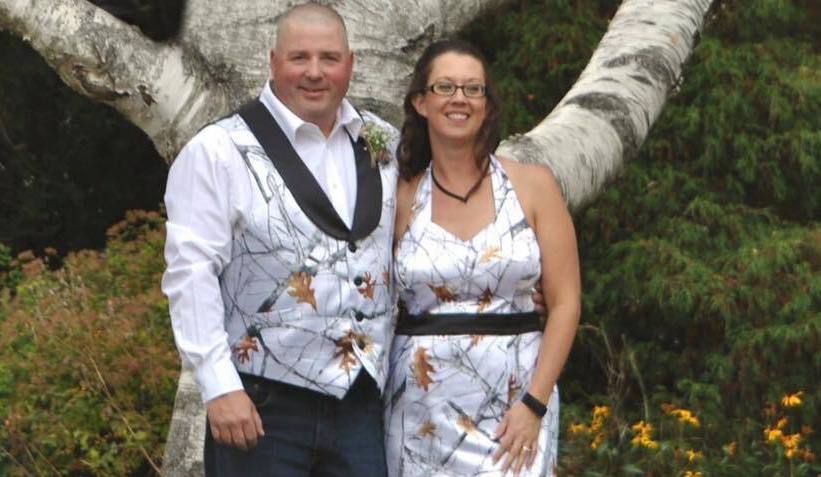
GREG AND JAMIE BLAIR. PHOTO VIA FACEBOOK
Married couple Jamie and Greg Blair are among the dead. According to the Canadian Press they were gunned down in their Portapique home.
“I honestly don’t really know what happened. They were both shot. That’s all we know, we don’t know why. We don’t know,” Greg’s sister, Kelly Blair, told CP.
Jamie’s aunt, Judy MacBurnie, told CP that the pair has two small children, who are now with their grandparents. Greg also has two sons from a previous relationship.The couple also reportedly ran a business specializing in servicing, selling, and installing natural gas and propane units in the area where the shooting took place.
In a public post shared more than 1,700 times on Facebook as of Monday afternoon, relative Jessica MacBurnie honoured the Blairs: “Two beautiful souls were lost today,” she said.
“My heart is breaking for my family, my heart is breaking for everyone else suffering through this tragedy,” MacBurnie said.
A GoFundMe page called “Showing love and strength for Greg and Jamie’s boys” has been set up by someone named Christine Toole.
Joanne Thomas and John Zahl
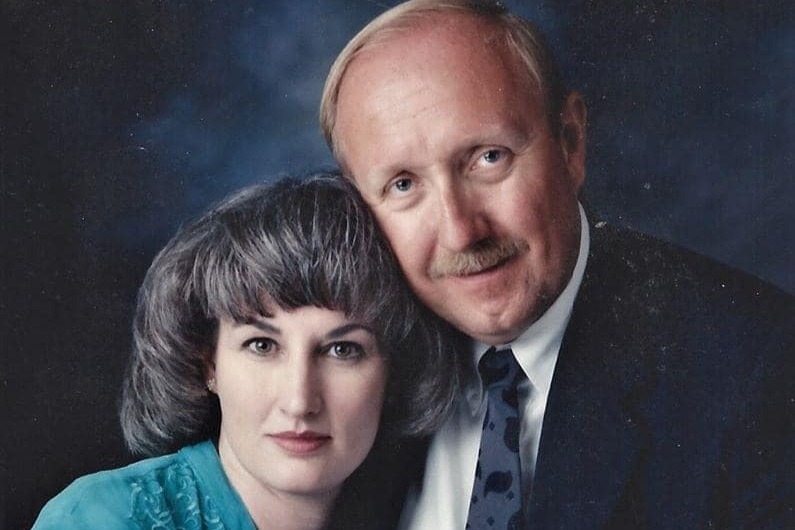
JOANNE THOMAS AND JOHN ZAHL. PHOTO VIA GOFUNDME
Joanne Thomas and John Zahl lived next door to the gunman, according to a GoFundMe page set up for their two sons by a woman named Gena Lawson. They are missing and presumed dead.
One of their sons, Justin, 22, told the CBC he hasn’t heard from them since Saturday evening and that John didn’t show up Monday to take him to an appointment. He said police told him to “prepare for the worst.”
The fundraiser said the couple lived in a home on Portapique Beach Road that was burned down; their cats are also missing.
“Both of them were volunteers at St. James Presbyterian Church often and Joanne was the head of the ‘Laundry Project,’ a nonprofit group that helps people in need have clean laundry,” the GoFundMe says.
Gina Goulet
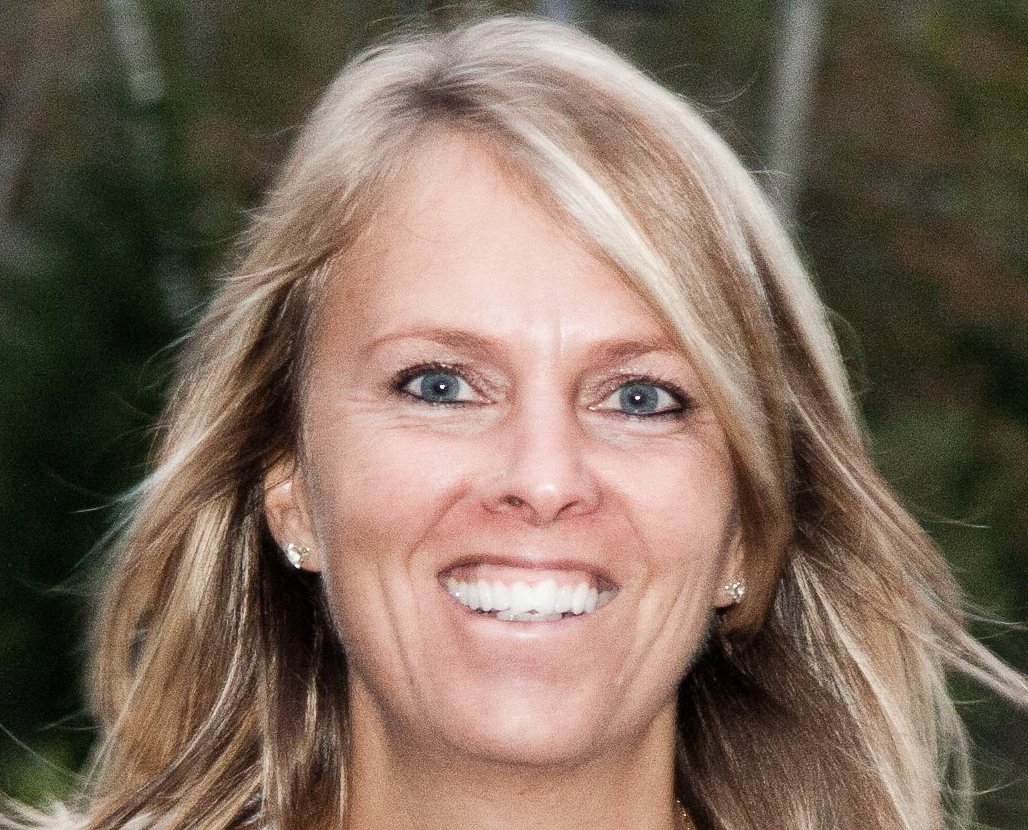
GINA GOULET. PHOTO VIA FACEBOOK
Gina Goulet, 54, was a denturist in Shubenacadie. Her daughter, Amelia Butler, confirmed to the National Post that her mother was one of the victims.
She told the Post that her mother had fought hard for her life: Goulet beat cancer—twice. In 2016, Goulet was diagnosed with brain cancer, and despite all odds, she survived, Butler said. Late last year, Goulet was diagnosed with cancer again and had almost beat it by the time she was shot and killed.
Goulet loved to salsa dance and travelled to Cuba when she could, Butler said.
“That was the place where she was the happiest,” Butler added.
Goulet’s sister, Micheline Kerekes, wrote on Facebook that she’s an “angel now” while a friend described her in a Facebook post as someone who was “funny, feisty, and loved to dance.”
A GoFundMe page has been set up by someone named Daniel MacDougall on behalf of Goulet’s daughter Amelia.
Dawn and Frank Gulenchyn
Dawn and Frank Gulenchyn were longtime Oshawa residents who recently moved to Nova Scotia, according to Durham Radio News.
Dawn Gulenchyn was employed at Hillside Terraces, a long-term care home, for decades, according to a statement from John Henry, Durham regional chair and chief executive officer.
“This tragedy hits especially close to home, as two of the victims were longtime Durham residents. Dawn, who was a former employee working at Hillsdale Terraces long-term care home for decades and retired in 2019, and her husband Frank,” he said.
A GoFundMe page has been set up to help the couple’s son, Jon Farrington, set up by Jon’s friends and colleagues. On Facebook, the couple’s other son, Ryan Farrington, wrote, “I love you mom and Frank.”
Joey Webber
On Sunday morning, Joey Webber went out to run an errand for his family in a rural community near Antrim and never returned, according to his neighbour, Halifax city councillor Steve Streatch. He was a father to two young girls.
Streatch described him as a hard worker and attentive dad. “I'd see Joey on my way to City Hall; he just lived down the road. He'd be standing at the bus stop and always wave with a big smile while he was watching over and making sure his children got on the school bus,” he said.
Webber worked in forestry at the local pulp mill but had been laid off recently because it was shut down. He was the sole provider for his family according to a GoFundMe page started by his sister-in-law.
Peter and Joy Bond
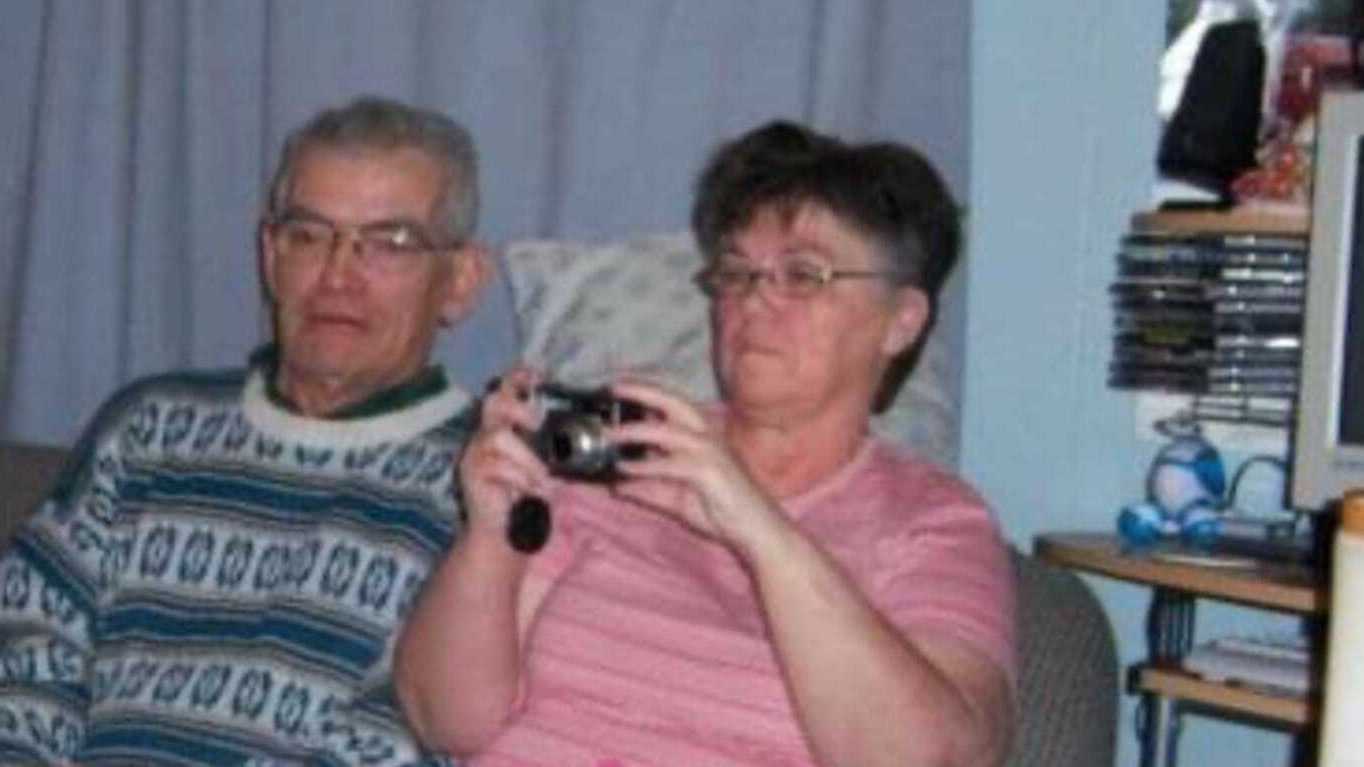
PETER AND JOY BOND. PHOTO VIA FACEBOOK
Portapique couple Peter and Joy Bond appear to be among the 22 victims.
On Facebook, Peter’s cousin, Deanna Gionet, said she will “never understand heartless inhumane acts like this.”
The Sea View Full Gospel Church also wrote a Facebook post expressing heartfelt condolences to the couple's families. A memorial group for the victims of the shooting showed a video of a drive-by of people in support of the Bond’s son Cory.
A GoFundMe campaign has been started to help the couple’s sons Cory and Harry.
Clarification, April 21, 2020: The RCMP said on Tuesday there were 23 victims, but amended that statement in a Twitter reply to say the number included 22 victims, plus the shooter.
Follow Manisha Krishnan, Anya Zoledziowski, and Anne Gaviola on Twitter.
Nova Scotia Gunman Was Not a Legal Firearms Owner, RCMP Says
The shooter, who killed 23 people over the weekend, should not have had access to weapons, police say.
By Mack Lamoureux Apr 22 2020
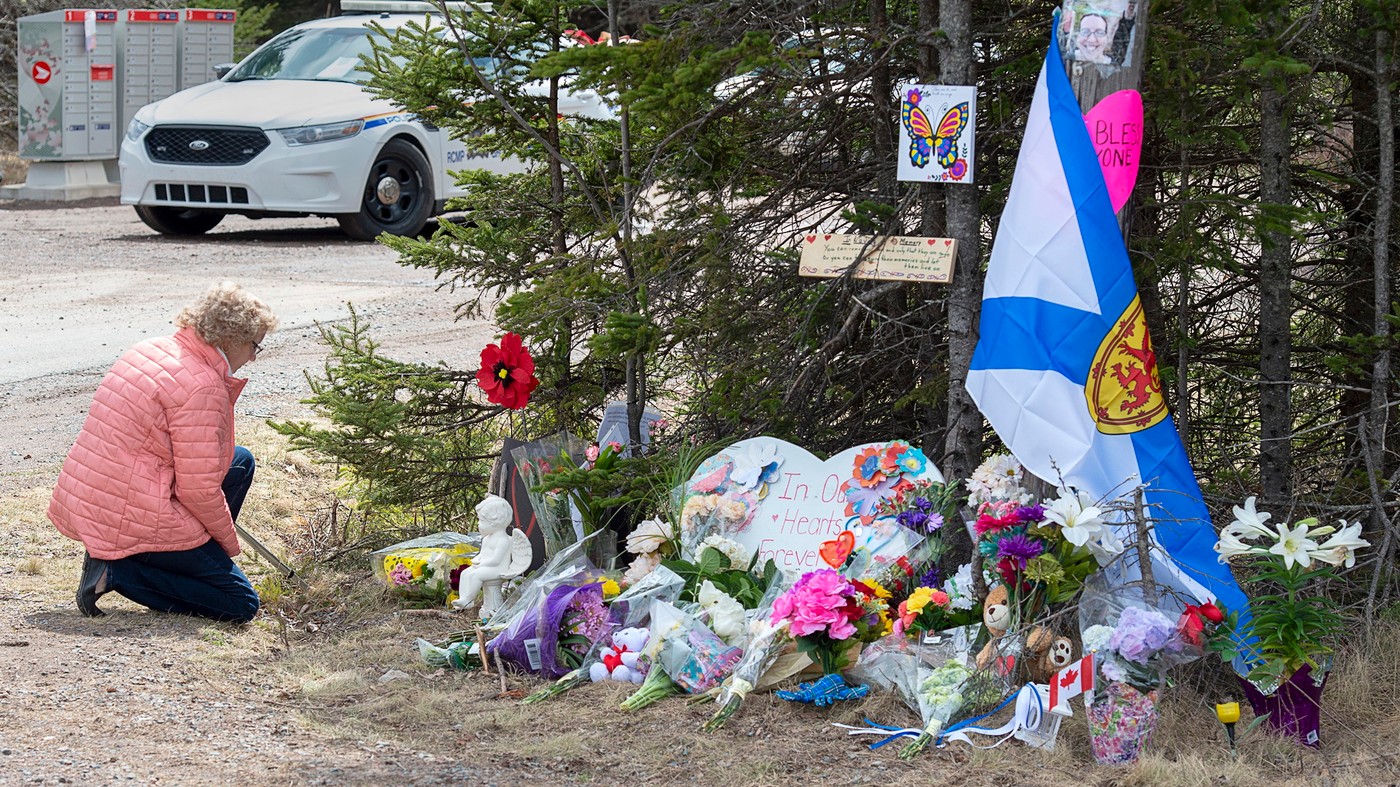 A WOMAN PAYS HER REPECTS AT A ROADBLOCK IN PORTAPIQUE, N.S. ON WEDNESDAY, APRIL 22, 2021. THE CANADIAN PRESS/ANDREW VAUGHAN
A WOMAN PAYS HER REPECTS AT A ROADBLOCK IN PORTAPIQUE, N.S. ON WEDNESDAY, APRIL 22, 2021. THE CANADIAN PRESS/ANDREW VAUGHAN
This article originally appeared on VICE Canada.
The man who committed the worst ever mass killing in modern Canadian history did not have a firearms license.
Nova Scotia RCMP Chief Superintendent Chris Leather said during a press conference Wednesday afternoon just how the killer obtained firearms is “a key part of the investigation.”
“We have a fairly good idea that, at least in Canada, he did not have a Firearms Acquisition Certificate,” said Leather.
Leather didn’t clarify what firearms were used by the killer or how many people were killed by gunshots and later added that how the killer obtained an “authentic police uniform” is also a “key part of the investigation.”
From Saturday night to Sunday morning, over a 13-and-a-half hour stretch, 51-year-old Gabriel Wortman killed at least 23 people while dressed as a police officer and driving a replica police cruiser. The bloodshed ended when he was shot dead in a parking lot at 11:26 a.m. on Sunday. Police said they first responded to a firearms call in Portapique, a small community 120 kilometers [62 miles] north of Halifax, at 10:26 p.m. Saturday where they found several victims and structure fires. They set up a perimeter and searched the property, but only realized the killer wasn’t there early Sunday morning.
No Emergency Alert
Amid the worst-ever mass killing in modern Canadian history, Americans living in Nova Scotia received a warning to their personal emails while Canadians had to rely on Twitter or the media.
The U.S. consulate in Halifax confirmed to VICE they sent an email out to U.S. citizens on Sunday. Marcia Seitz-Ehler, a spokesperson for the consulate, said that they got their information from the RCMP Twitter account.
“It is our protocol—when emergencies occur—to alert U.S. citizens in the area to the situation,” Seitz-Ehler told VICE.
While the RCMP had access to a far more powerful tool than an email blast—an emergency alert which could have notified all Nova Scotians via their phone. Leather said Wednesday that the province reached out to send out a release and the RCMP were in the midst of planning to release an emergency alert when the suspect was killed. The province initially reached out at 10:15, over an hour before Wortman was killed, and Leather said the delay was bureaucratic in nature.
“A lot of the delay was due to communication between the (Emergency Management Office) and the various officers,” said Leather. “And then there was a discussion about how the message would be constructed and what it would say. So in that hour and a bit is when the subject was killed at 11:26.”
Some loved ones of the victims have said the RMCP could have saved lives if they asked the province to send an emergency alert out.
"If we were all given that security alert for Northern Nova Scotians to lock your doors, she would have been home," a friend of one woman killed while she was out for a walk told the CBC. "She would have been safe in her house. She wouldn't have gone out for a walk."
Few details about the shooter
Meanwhile, an incomplete picture of the killer is beginning to form. The 51-year-old was a successful businessman who ran two successful denture clinics and owned several properties in the province. He grew up in New Brunswick and was a bit of an oddity—one university friend said fellow students picked on him. He was obsessed with the RCMP and owned multiple replica police cruisers. He’s been violent in the past, with a 2001 assault charge stemming from an attack on a teenager. Global News has reported he ripped people off financially, even tricking people to signing over their property.
Horrifying details of how the killings transpired are slowly coming to light via interviews with victims. One man told the CBC that he found his brother shot dead after he left to go investigate a nearby house fire. He said he saw his brother dead on the side of the road in a pool of blood and turned and ran. When he stopped and looked back he saw the shooter with a flashlight looking for him.
“I ran so far into the woods and I laid there for about four hours hoping and praying the police would come,” said Clinton Ellison. “Finally they came and got me out with an armored vehicle. It was a nightmare through hell.”
Among the victims are nurses, teachers, RCMP officers, retired firefighters, mothers, fathers, daughters, and sons.
“No one man’s action can build a wall between us and a better day, no matter how evil, how thoughtless or how destructive,” said Prime Minister Justin Trudeau during a Monday press conference. “As families grieve the loss of a loved one, all Canadians are standing with them.”
Trudeau also said his government was looking to bring forward a ban on "assault-style weapons."
Nova Scotia Mass Shooting Started as a Domestic Assault: Reports
The killer’s first attempted victim was his girlfriend, but she managed to get away, Global News reports.
By Mack Lamoureux Apr 24 2020
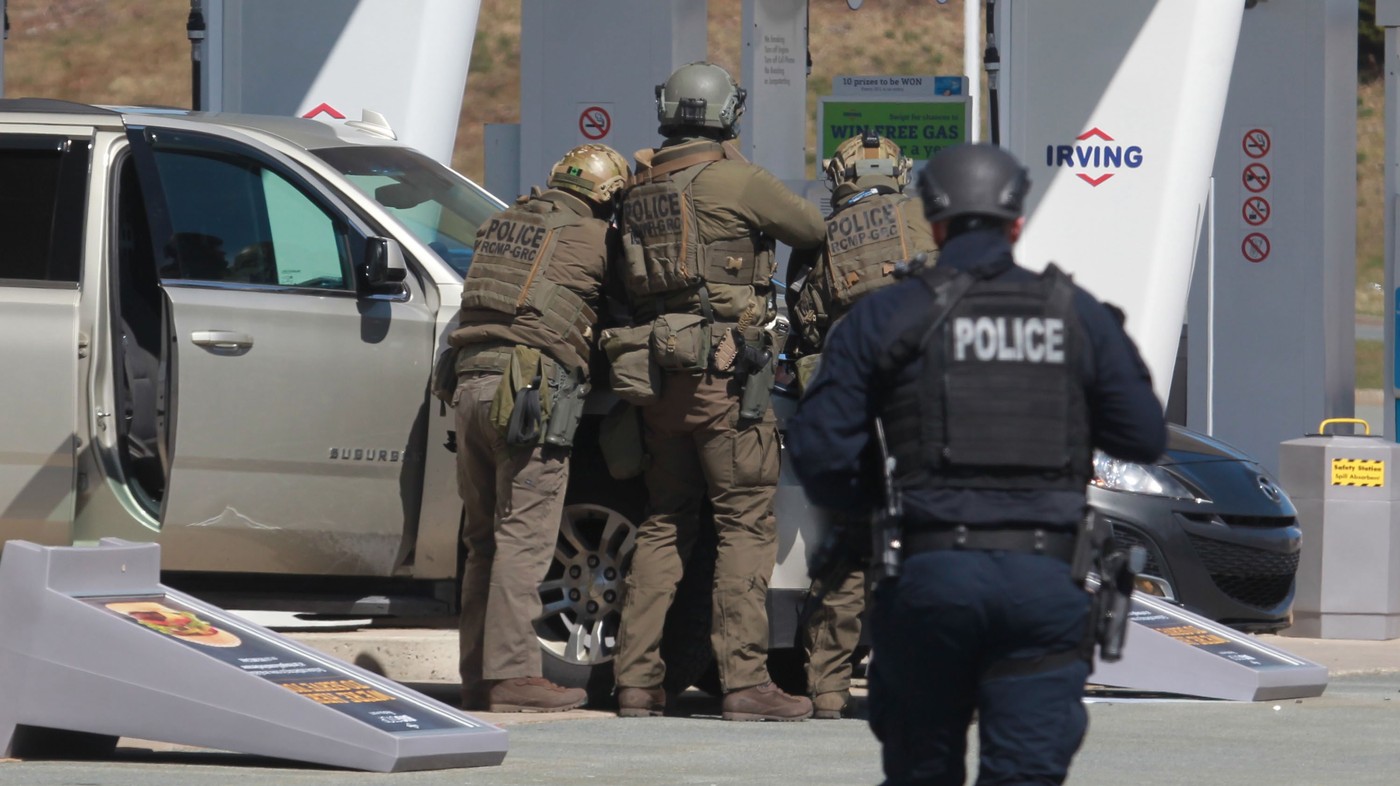
RCMP OFFICERS CONFRONT THE SHOOTER AT A GAS STATION
IN ENFIELD, N.S. ON SUNDAY. PHOTO BY TIM KROCHAK/CP
This article originally appeared on VICE Canada.
The Nova Scotia mass shooting that ended with 22 people dead started with domestic violence, according to media reports.
The suspected gunman, Gabriel Wortman, 51, and his girlfriend got into a fight at a party on Saturday night in the Portapique area, Global News reported When they got home, Wortman assaulted his girlfriend and tied her up.
According to Global, the girlfriend eventually escaped and hid in the woods. Police found her alive at 7 a.m. Sunday morning. That is when they learned about Wortman being dressed as a police officer and driving a cruiser, and when the woman provided police with the image of the car.
The RCMP did not respond to a request for comment.
Earlier in the week, Nova Scotia RCMP Chief Superintendent Chris Leather said at a press conference that the police were not aware of the shooter being in a uniform until they found a “key witness.”
“Those details came in their totality to us early on the morning on Sunday after a key witness was located and interviewed,” said Leather. “The bulk of our details about our suspect came about that time.”
The RCMP have confirmed they were called to a Portapique residence at 10:26 p.m. Saturday for a firearms call. When they arrived they found “multiple casualties” but no shooter. From Saturday evening to Sunday morning, Wortman left a 150-kilometer [93-mile] trail of bloodshed across 16 crime scenes. The 22 dead include a teacher, nurses, a RCMP officer, and a retired firefighter. It is unknown how many of the victims Wortman knew personally.
Wortman was killed by police outside a gas station in Enfield, Sunday morning. According to the CBC, Wortman had stopped to fuel up a Mazda 3 he had stolen from one of his victims. At the gas station an RCMP crew including a K-9 unit was already there filling up an unmarked car. When Wortman went to fire on the police he was shot first, reported Global.
One of the victims is RCMP Const. Heidi Stevenson, who the RCMP said died on a highway outside Shubenacadie, Nova Scotia. Global reported that Stevenson was killed after being shot in the chest by Wortman then dragged out of the vehicle and shot again.
Wortman stole Stevenson's handgun after killing her, Global said.
During his spree, the killer reportedly used a rifle, shotgun, and a handgun. The RCMP said Wortman did not have a firearms acquisition license, and how he obtained his weapons was a “key part of the investigation.”
Follow Mack Lamoureux on Twitter.
The Nova Scotia Shooting Went on for 12 Hours. Why Wasn't an Emergency Alert Sent?
Several of the victims are believed to be unaware there was an active shooting situation happening.
By Mack Lamoureux Apr 21 2020
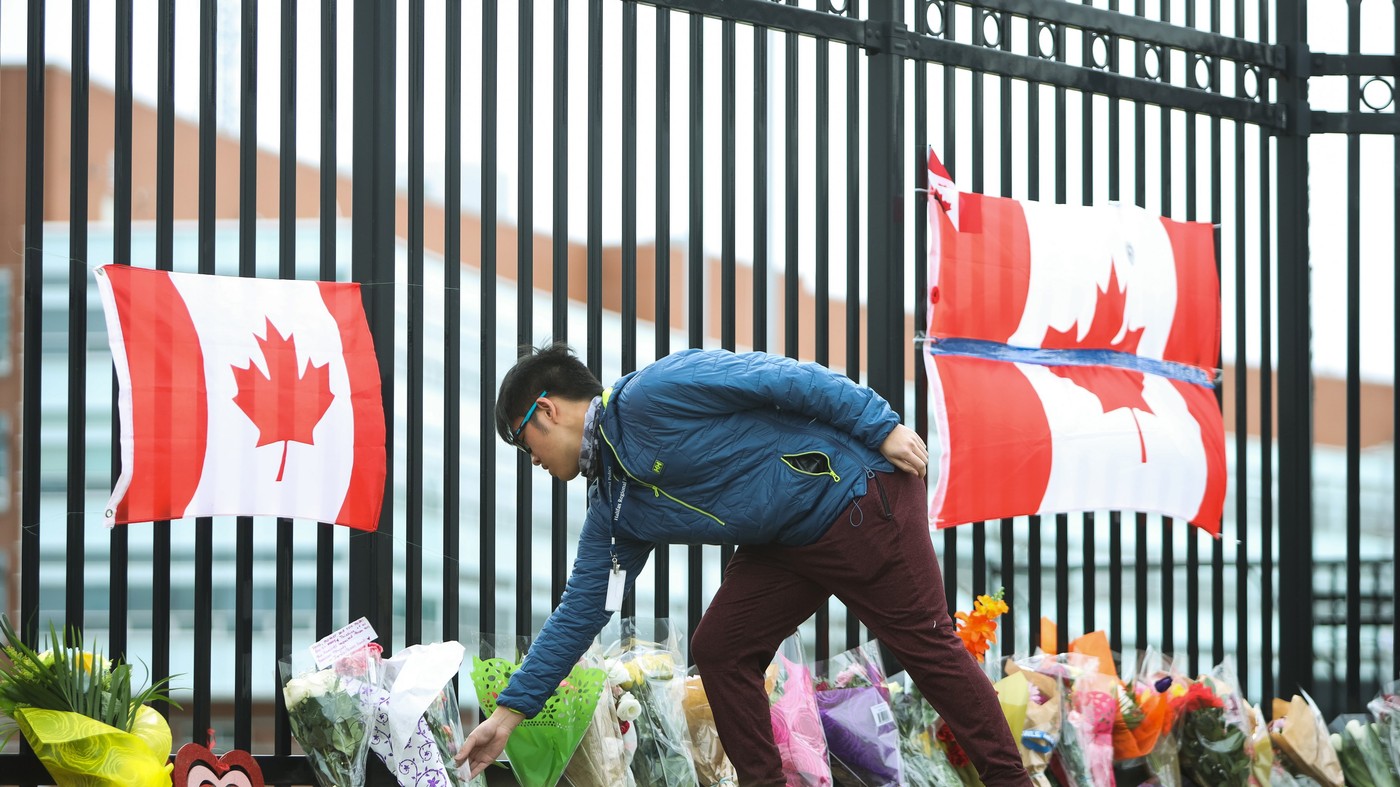
A PERSON LEAVES FLOWERS AT A MAKE-SHIFT MEMORIAL DEDICATED TO CONSTABLE HEIDI STEVENSON. PHOTO VIA RILEY SMITH/CP.
On Saturday night Nova Scotia RCMP started informing the public about what would become one of the darkest days in Canadian history.
The alert was sent via a tweet, at 11:32 p.m. Atlantic time. In it, authorities informed residents of Portapique, a small community 120 kilometres north of Halifax, to remain inside as police were responding to a firearms call. The next tweet, sent from the Nova Scotia RCMP Twitter account, came eight hours later and warned residents that this was an active shooter situation and again warned them to remain inside.
The Nova Scotia RCMP Twitter account has about 90,000 followers. Nova Scotia has a population just shy of a million people.
At no point during the 12-hour rampage was an emergency alert message sent out to Nova Scotians, and media reports have said a number of the victims were going about their day, unaware that there was an active shooter case.
Authorities still don’t know how many people were killed in the horrific 12-hour murder spree. The official total is 19, but there are several missing people, and burned homes are being searched for victims.
It is the worst killing spree in modern Canadian history.
If there ever was a moment to use the emergency alert situation—a moment when a man dressed as a police officer was travelling the roads preying on the public’s trust of police—this was it. But the alert was never sent. Instead, the majority of communication with the public remained via Twitter. There was also a single Facebook post put out by the NS RCMP on Sunday morning, which was updated three times. Its Facebook following is just over 90,000.
The difference between a tweet and an emergency alert is like the difference between a whisper among friends and a bloodcurdling scream. An emergency alert allows a province to send a message directly to the citizens through their phones, television, and radios It’s typically used during cases of a child abduction or when police are warning the public to stay inside. Nova Scotia most recently used an emergency alert on April 10 to warn the public about coronavirus rules.
A tweet relies on Nova Scotians in the area being aware that a website called Twitter exists and the media quickly picking up the story to spread the message. Given the incident happened overnight Saturday and into Sunday morning—when people are sleeping and news organizations have a skeletal staff, if any at all—it’s certainly not an optimal way to relay vital information.
Nova Scotia RCMP Chief Superintendent Chris Leather and RCMP spokesperson Cpl. Lisa Croteau were asked during a press conference Monday afternoon about why the emergency alert system wasn’t used. Leather responded, saying that he believed an amber alert did go out, but Croteau corrected him: “It was just the Twitter and Facebook page because it was unfolding,” she said.
“We were in contact with the province about it but it just never…,” Croteau said to Leather before trailing off.
“It’s a good question and I don’t have a response for you about that,” Leather said later in the press conference when asked again. “We had relied on Twitter because of the instantaneous manner that we can communicate.
"We’re aware that we have thousands of followers in Nova Scotia and felt that it’s a superior way to communicate this ongoing threat.”
The victims include people the shooter knew and those he did not. Witnesses say the killer shot retired firefighter Tom Bagley dead after the victim went to investigate the cause of a house fire. Family members of another victim say he was killed when out running errands.
The Chronicle Herald reported a group of locals in Wentworth Valley started a telephone network warning local walkers to stay off the road. In the case of Lillian Hyslop, they were too late. By the time the network informed her husband she was already out for her walk, where she would be shot dead by the killer, the Herald reported.
One of the women who organized the telephone effort to keep people off the roads is lamenting why an emergency alert wasn’t sent out. “I could have saved Lillian's life if I had known 45 minutes before that,” Debi Atkinson told the Herald.
In total, the Nova Scotia RCMP team sent out 12 tweets during the murder spree. They ranged from showing a photo of the killer, to warning people that he was dressed as a police officer and driving a replica RCMP car, to clarifying that he wasn’t part of the police force.
RCMP Commissioner Brenda Lucki told reporters on Monday that the RCMP will be using this as a learning experience.
“I do say that in any incident such as this, we always have to look back at what we did. Nobody can lose their life in vain and (Stevenson) will not lose her life in vain and neither will the other victims. We have to ensure that whatever happened there, there’s always going to be a better way to do things,” said Lucki. “And so if we can, we’ll take this and move forward and find a better way to advise the public.”
Nova Scotia Premier Stephen McNeil said that the province didn’t issue an alert because it was never asked. However, he was quick to defend the RCMP and explain how chaotic a situation like the one involving Canada’s worst-ever spree killing could be.
“There will be lots of questions, but I can tell you I’m not going to second-guess what someone with the organization did or didn’t do at this moment in time,” he said. “This was an active environment—deaths, gunfire. Let’s give them an opportunity as an organization to explain that.”
Nova Scotia is hardly the only province with issues surrounding its emergency alert system. In January, Ontarians woke up on a Sunday morning to an emergency alert warning of a problem with a nuclear power plant. The alert turned out to be false, and “human error” was blamed.
Ontario released a lengthy report into the incident and has promised that its system has since improved.
Shootings, But Police Say19 Killed in Nova Scotia Burned Houses Could Raise Death Toll
The rampage took place over 100 kilometres across Nova Scotia before the killer was shot dead by police. His victims included a 23-year-veteran of the RCMP, a teacher and a nurse.
By Mack Lamoureux and Ben Makuch Apr 20 2020
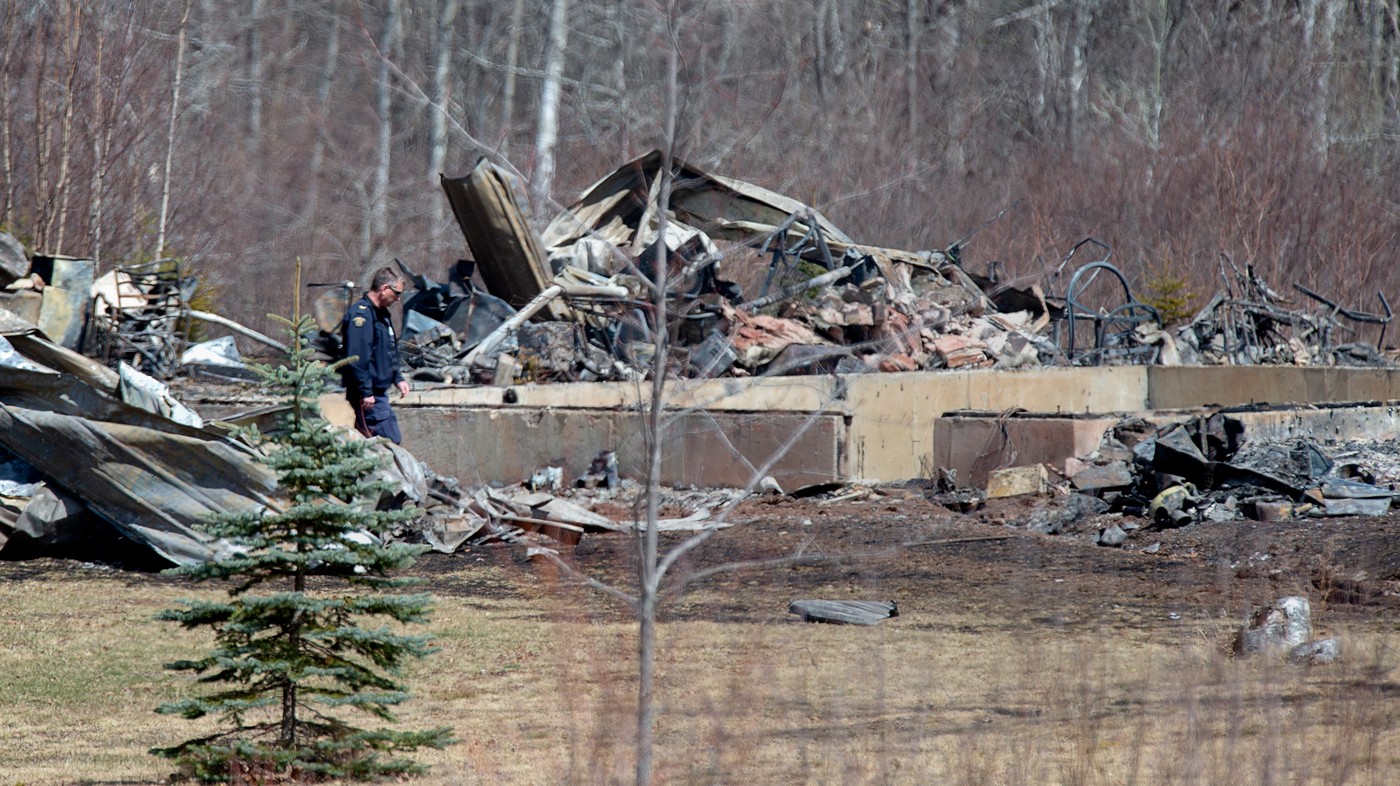

AN RCMP INVESTIGATOR INSPECTS A HOUSE DESTROYED BY FIRE IN NOVA SCOTIA. PHOTO VIA CP/ANDREW VAUGHAN.
A man dressed in a police uniform and driving a replica cop cruiser preyed on Nova Scotians’ trust of the police as he committed the worst mass killing in modern Canadian history.
So far, the RCMP has confirmed the killing spree committed by Gabriel Wortman has claimed at least 19 lives. Nova Scotia RCMP Chief Superintendent Chris Leather told media at a press conference Monday afternoon that he could not rule out more victims being found and that RCMP is investigating 16 scenes connected to the rampage, which stretch roughly 100 kilometres over small communities and the highway.
“We are relatively confident we’ve identified all the crime scenes, however we haven’t been able to fully examine the crime scenes,” said Leather. “For instance we’ve had five structure fires, most of those being residences, we believe there may be victims among those homes which burned to the ground.”
Leather said that the killings, “at least in part, very random in nature.” Leather added that he expects the death toll to rise in the coming days. Leather said that the mock police car was first reported to them early on Saturday evening but wasn’t discovered until Cst. Stevenson was killed.
“That vehicle was one of the two that was fully engulfed in flames” said Leather. “We don’t know the origin of the uniforms but we have reason to believe that they were either actual uniforms or very good facsimiles.
“His ability to move around the province undetected was surely greatly benefited by the fact that he had a vehicle that looked identical in every way to a police car,” he added later.
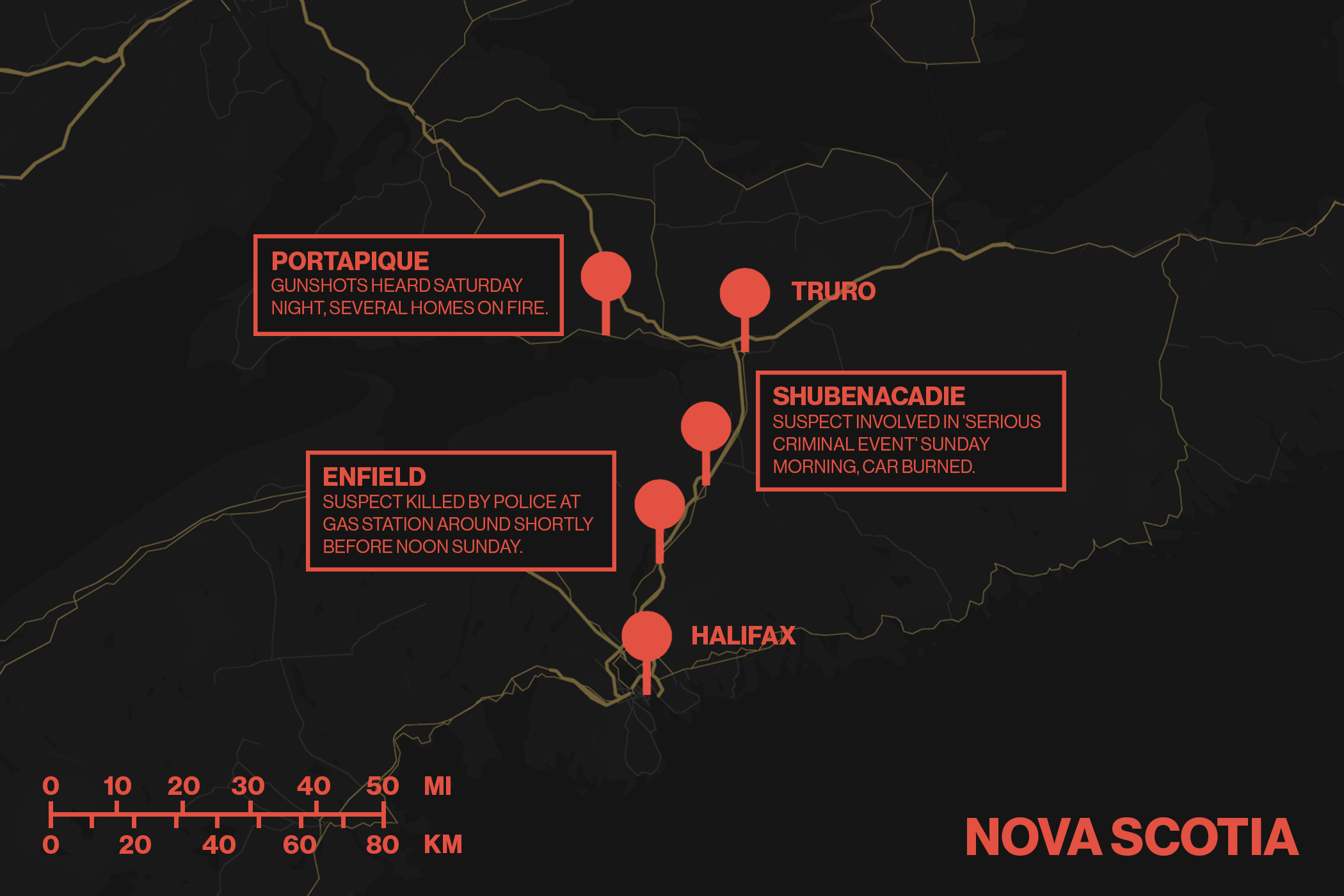
Wortman’s spree began on Saturday night when police responded to a firearms call in the small town of Portapique, roughly 125 kilometers north of Halifax. When they arrived they found multiple casualties but no sign of the shooter. Wortman’s spree would continue for over 12 hours before finally ending in a hail of gunfire outside an Enfield gas station.
Leather said that all the victims were adults and that some of the victims were known to Wortmon but would not specify what the relationships were. Leather said that after the replica police vehicle was destroyed Wortman was able to get a citizen’s vehicle—which police identified as a silver Chevy Tracker—that he used to get around. How Wortman got that vehicle is currently under investigation.
Wortman was shot dead by police mid-day Sunday at a gas station 35 kilometres north of Halifax, ending hours of terror.
The victims include Cst Heidi Stevenson, a 23-year-veteran of the Nova Scotia RCMP; Jamie Blair and Greg Blair; Jolene Oliver, Aaron Tuck, and Emily Tuck; teacher Lisa McCully; and Heather O’Brien, a nurse from Truro, N.S.
“I want everyone to remember how kind she was. How much she loved being a nurse,” wrote a loved one on Facebook of O’Brien. “The way her eyes sparkled when she talked to her grandchildren and the way she just loved Christmas. Let those things define her. Not the horrible way she died.”
The identities of the other victims have yet to be released or confirmed. Police said that Cst Chad Morrison, an 11-year veteran of the police force is at home recovering from gunshot wounds.
The Globe and Mail spoke to one man who knew Wortman who said the man showed up to his house and pounded on the door with a rifle in hand. The man and his wife hid until Wortman left. “He came here to kill me, there’s no question about that,” the man told the newspaper.
Details on Wortman and a possible motive for the killings are sparse. At a press conference on Sunday evening, RCMP Chief Superintendent Chris Leather said this indicates at least some level of premeditation.
“The fact that this individual had a uniform and a police car at his disposal speaks to this not being a random act,” said Leather.
Who was the shooter?
Not much is known about why Wortman committed Canada’s worst mass killing of the modern age.
We know he worked as a denturist, and he owned multiple properties, including in Portapique, where the rampage started. We know that the man who was dressed as a police officer as he killed his victims was seemingly obsessed with policing. We have a brief biography of where he grew up and went to school. We also know a little about what he was like over the years. However, the people who know him best or could somehow shed some light on one of the darkest days in Canadian history have either not come forward or were among the now 17 victims.
Here is what we know so far.
Wortman ran two denture clinics, one in Halifax and one in Dartmouth. The clinics by all accounts seemed to be successful and made Wortman well off but were closed as a result of the COVID-19 pandemic. The clinics have now been taped off by police. Neighbours told the Globe and Mail that Wortman struggled with alcohol abuse.
Wortman appears to hail from Riverview, New Brunswick which is a small town of 20,000 just outside of Moncton. He graduated from Riverview High School in 1986 and Wortman attended the University of New Brunswick. The Globe and Mail have reported that Wortman initially was studying to be a mortician in university but eventually switched his focus to dentures. One friend, comedian Candy Palmater, said she was inseparable from Wortman in university and that people used to pick on him.
“Gabriel always had a sadness about him, but I was so shocked to hear that he’d hurt other people,” Candy Palmater told the Chronicle Herald. “I don’t know what his later adult life was like, but I can tell you that at university, people weren’t nice to him.”
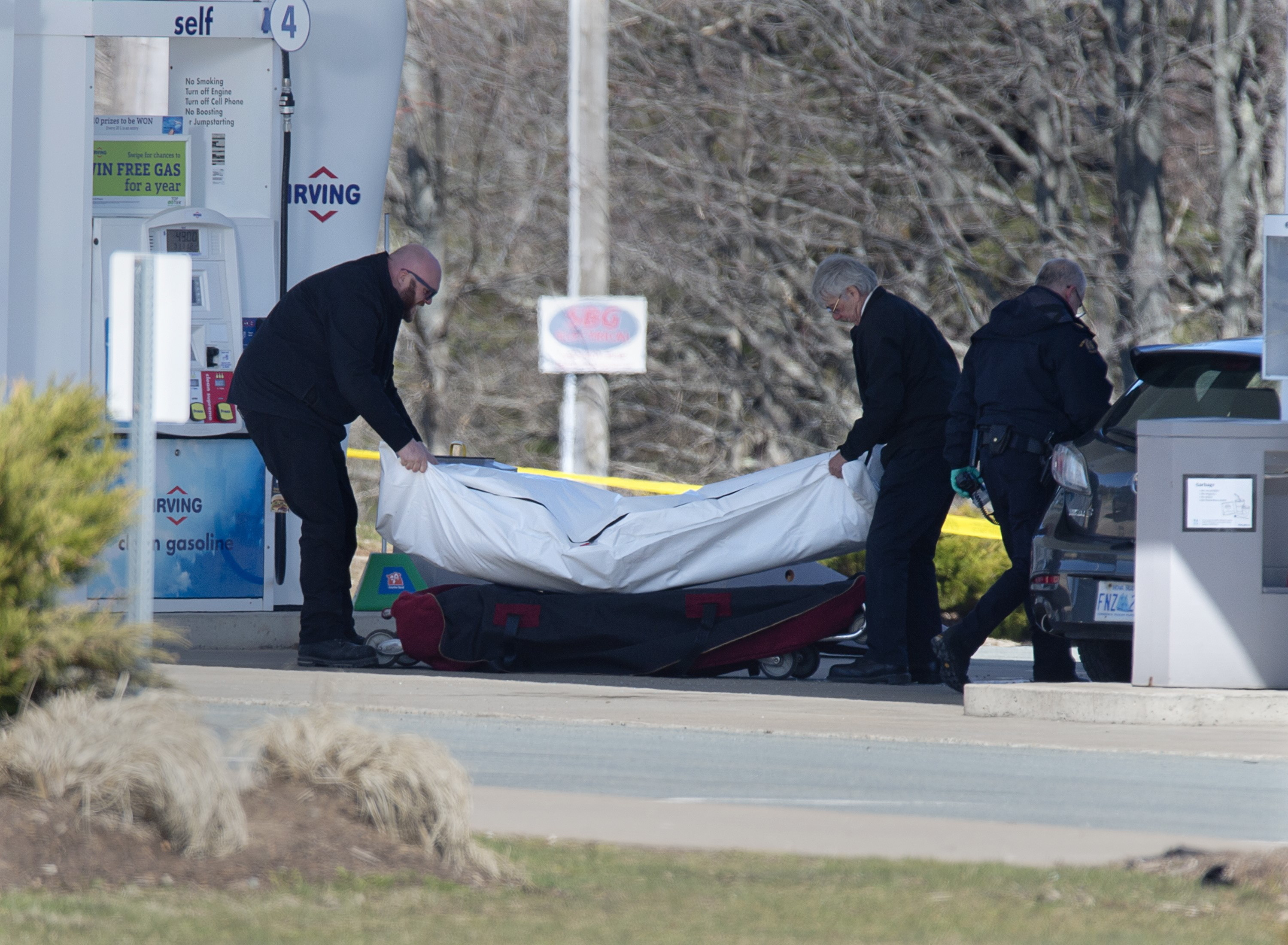
WORKERS WITH THE MEDICAL EXAMINER'S OFFICE REMOVE A BODY FROM A GAS BAR IN ENFIELD, N.S. ON SUNDAYTHE CANADIAN PRESS/ANDREW VAUGHAN
Several people have described him as being someone obsessed with the RCMP. One former client of his wrote on Facebook, in a now-deleted post, that Wortman showed him a police car he restored and how he had a uniform to go with it. A man who lived near Wortman said that his home in Portapique was a “shrine” to the RCMP when speaking to the Globe and Mail.
“He was one of those freaky guys, he was really into police memorabilia,” Nathan Staples said.
In another deleted Facebook post, another former client wrote that Wortman told him that he buys old RCMP vehicles and restores them as a hobby and that he had multiple replicas at his home. A yearbook photo of Wortman, that’s been widely circulated on social media, reads “Gabe’s future may include being an RCMP officer.”
‘Everyone knows a Mountie’
In a press conference Monday, Trudeau gave his respects to those killed by Wortman.
“We were jolted from that common cause by the senseless violence and tragedy in Nova Scotia. A gunman claimed the lives of at least 18 people, among them a woman in uniform whose job it is to protect lives even if it endangers her own,” said Trudeau. “(Cst. Stevenson) died protecting others. She was answering the call of duty—something she had done every day she went to work for 23 years.”
Trudeau said public vigils honouring the victims cannot be held publicly because they would break physical distancing measures currently in place to fight the COVID-19 pandemic. Instead, a virtual vigil will be held at 7 p.m. on Friday. It will be accessible through a Colchester community page.
“This happened in small towns—places where people have deep roots and look out for one another. Everyone knows a Mountie because they are officers, social workers, or teen counselors,” Trudeau added.
The attack has eclipsed the 1989 Ecole Polytechnique massacre as the deadliest mass killing in modern Canadian history.
Follow Mack Lamoureux and Ben Makuch on Twitter.
—With files from Anya Zoledziowski
























